SEO metrics help evaluate the effectiveness of your SEO efforts.
Having worked in this field for many years, I can’t stress enough the importance of tracking your organic performance—and optimizing it on the go.
But are you looking at numbers that really signal success?
In this guide, I’ll cut through the clutter and share the key SEO visibility metrics that matter in 2025.
You’ll learn why they are important and how to track them the right way.
11 Essential SEO Metrics to Track in 2025
Remember: the most important SEO outcome is the leads and revenue you generate for your business.
But you need to get there first.
The best approach is to set primary objectives (e.g., revenue and leads) and track various secondary metrics (e.g., rankings and backlinks) to evaluate your progress.
Your priorities may shift toward certain KPIs depending on your current objectives.
For example, when assessing your website’s health, you will likely focus on technical SEO metrics.
On the other hand, you’ll prioritize tracking keyword rankings and traffic value to assess your content’s performance.
Here are the top SEO metrics you should focus on and ways to monitor them.
1. Organic Traffic and Total Clicks
Organic traffic is the number of visitors who arrive at your website organically through search engines like Google—without the influence of paid ads.
Why it matters:
Organic traffic is a key SEO metric because it shows the natural reach of your website.
High organic traffic suggests that your site is well-optimized for search engines and for your target keywords and meets the needs of your target audience.
Remember, attracting lots of organic traffic doesn’t always translate into increased sales and conversions.
Why?
Because this traffic might not be relevant, possibly due to targeting the wrong keywords. So, you should always monitor other metrics alongside organic traffic.
Another possible reason is the lack of adequate conversion paths on your website. That’s why you need to develop a strong content funnel to convert and nurture organic visitors.
For example, in this article on designing an effective homepage, Hotjar organically integrates a CTA to try their product:

This approach can positively impact the ROI of your organic traffic and maximize its value.
How to track it:
The most accurate method of tracking organic traffic is by analyzing Total Clicks in Google Search Console.
Head to Performance → Search results.
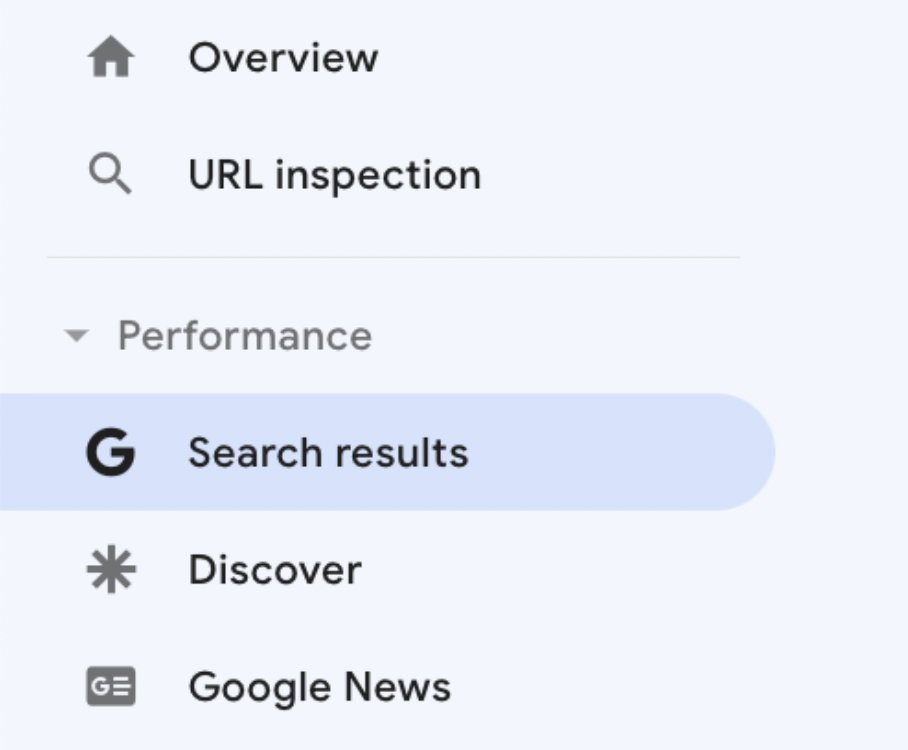
Here, you can see the ‘Total Clicks’ metric, which shows how many times users clicked through to your site from search engine results pages (SERPs).
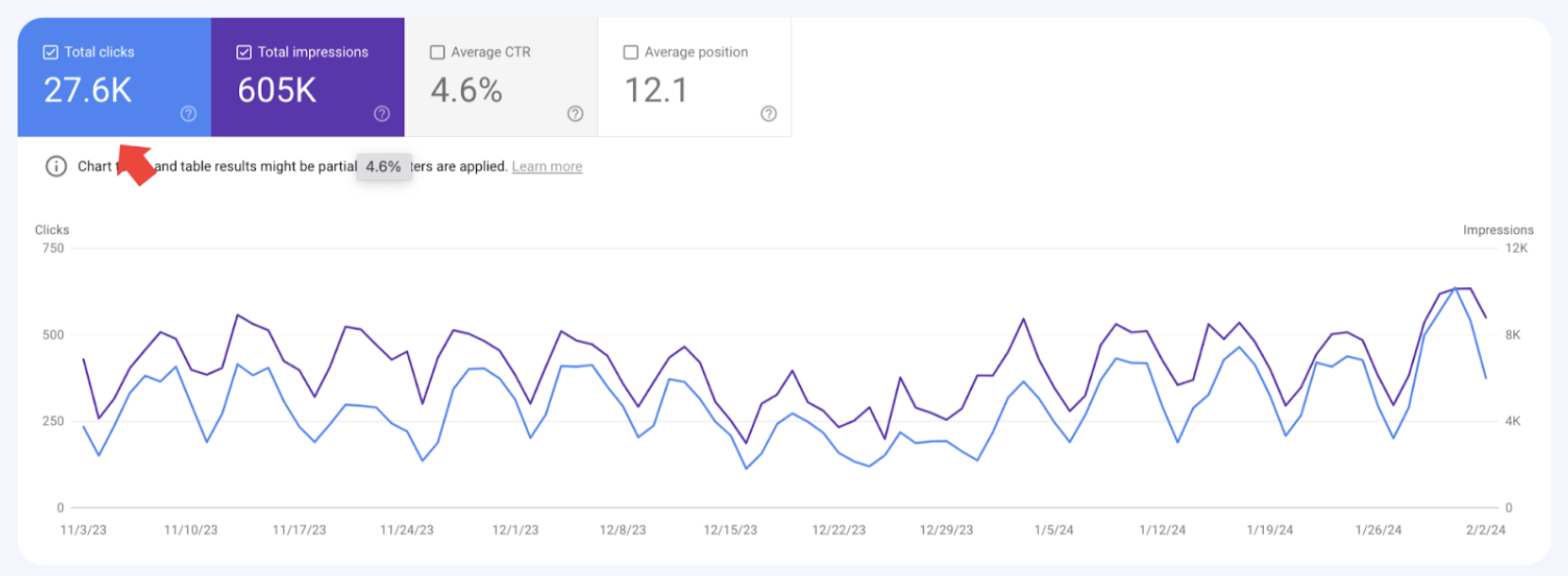
You can then use various filters to narrow your search.
For instance, apply a filter to analyze pages from the ‘/blog/’ directory.”
Click + New → Page.

Then, specify what URLs you’d like to analyze.
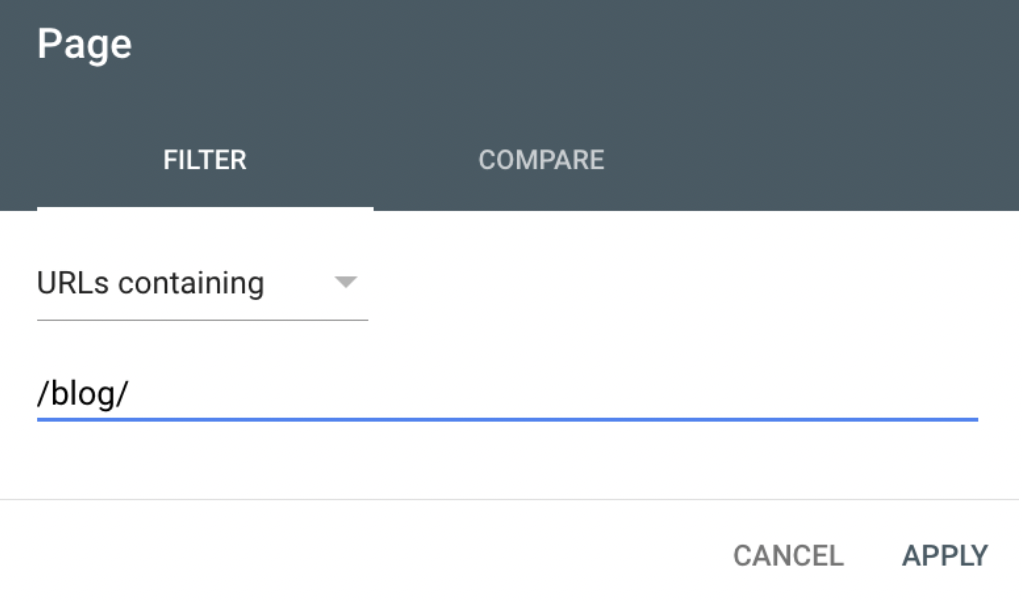
You can also check organic traffic in Google Analytics 4 (GA4).
Navigate to Reports → Acquisition → Traffic acquisition.
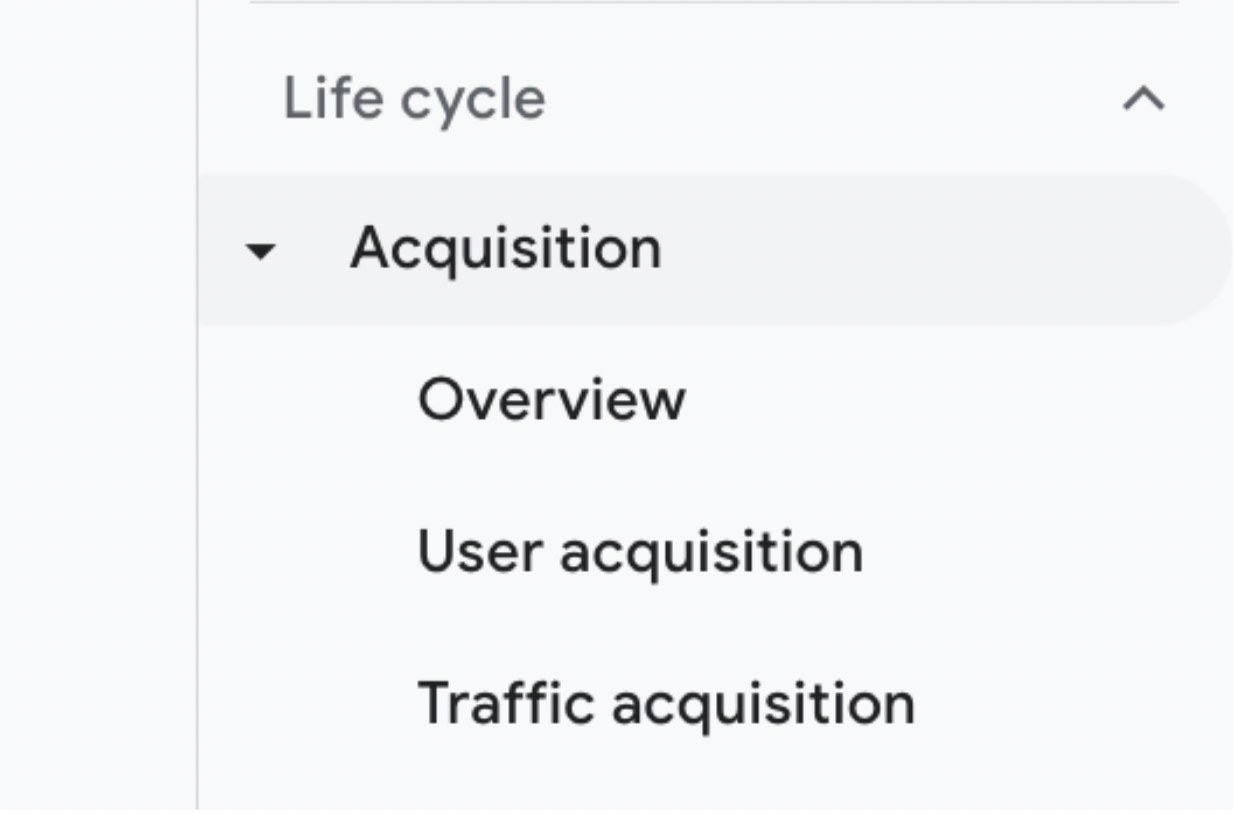
Here, examine Organic Search traffic to assess how many users visited your site through search engines.
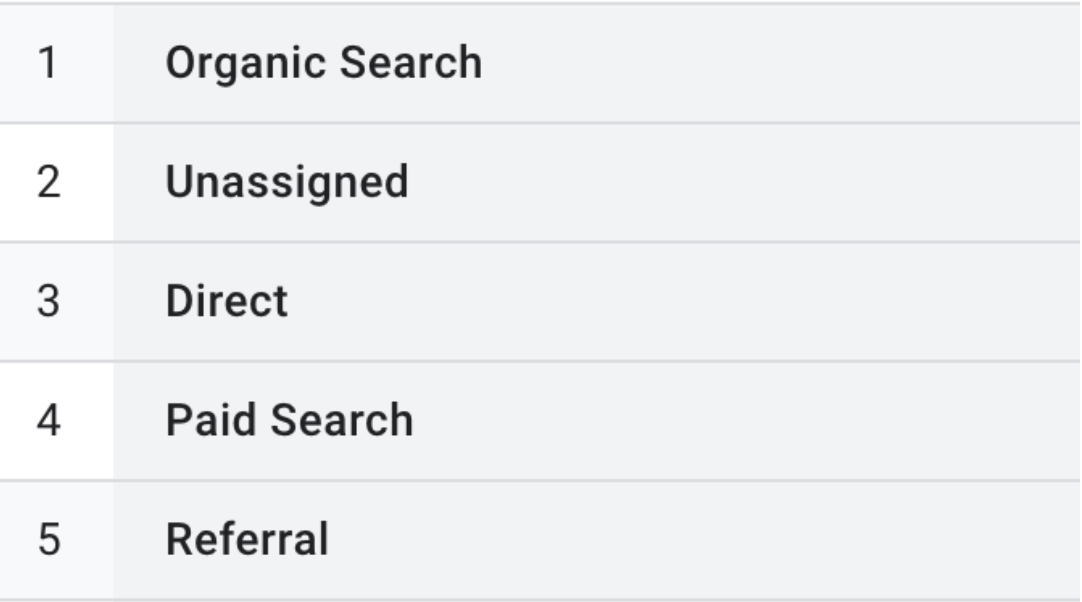
You can also compare different date ranges to evaluate historical performance—and see if your strategy is moving in the right direction.

Finally, go to ‘Engagement’ → ‘Landing page’ to check traffic changes for specific pages.
Here, click ‘Add filter’ to only show organic traffic.
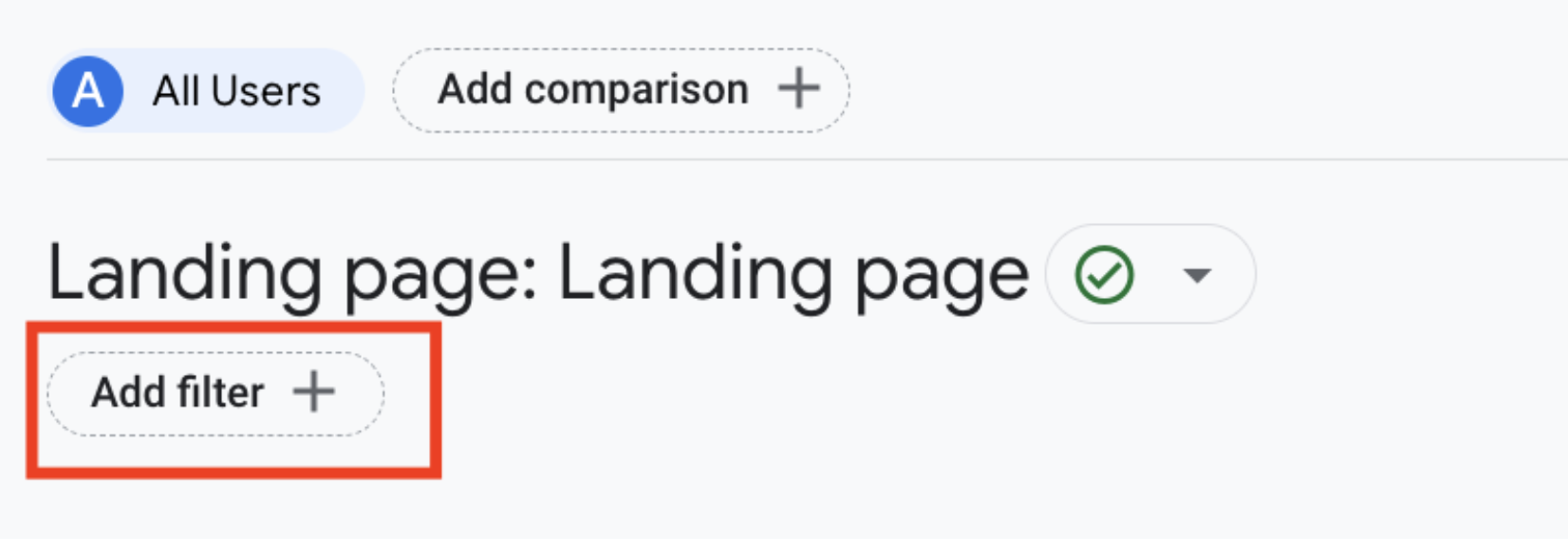
Choose:
- Dimension: ‘Session medium’,
- Match type: ‘Exactly matches’,
- Value: ‘Organic’.
Now, you can analyze organic traffic for each specific page within your selected date range.
Remember: tracking organic traffic should lead to specific actions. For example, if you spot pages that attract lots of visitors, you can:
- Prioritize them for regular updates,
- Add backlinks pointing to your money pages,
- Integrate CTAs.
⚡️ Pro tip:
You can also check your competitors’ organic traffic to benchmark your performance.
Use tools like Semrush’s Organic Research to complete this task. First, enter the domain of your competitor.
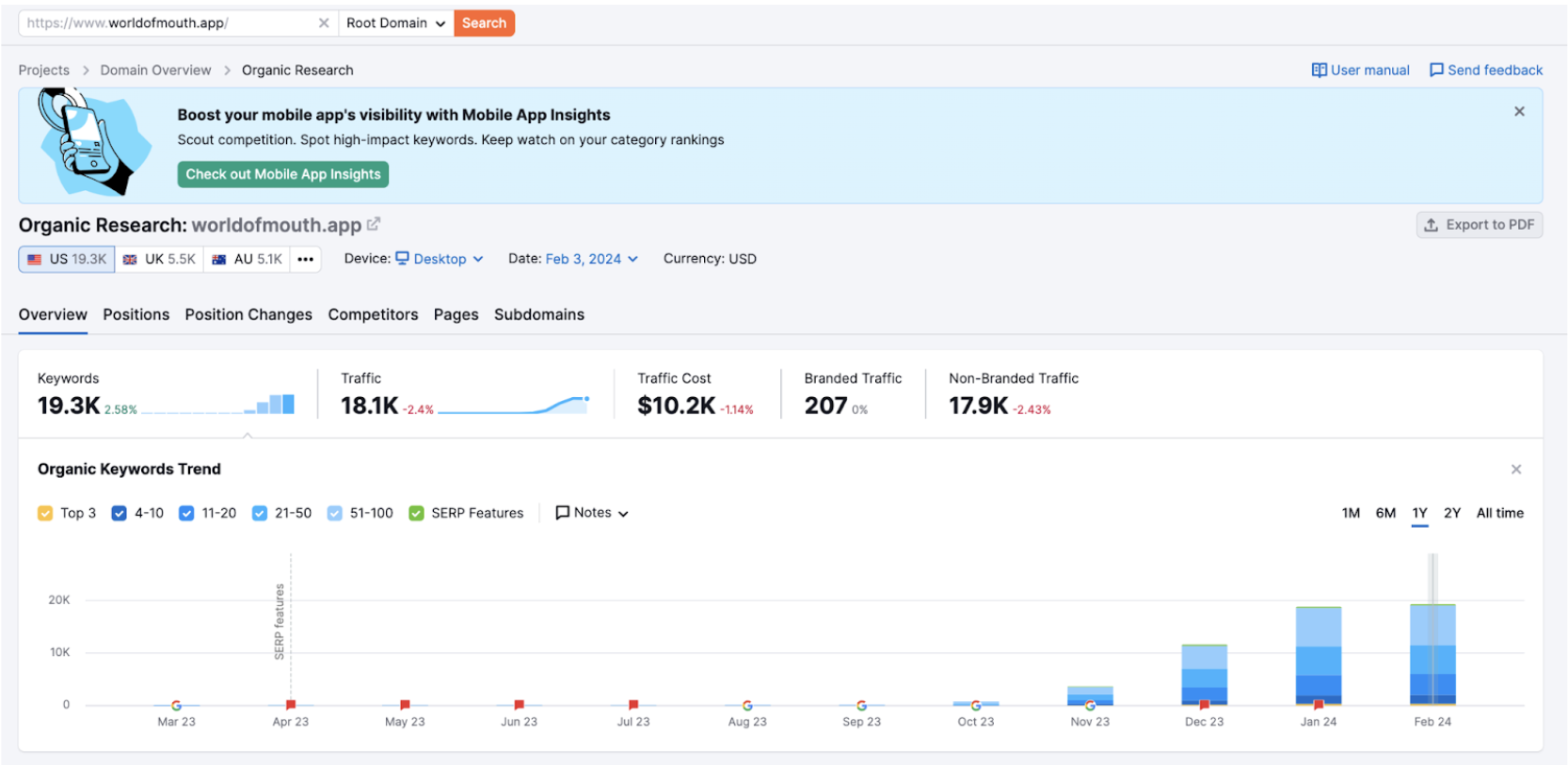
Next, open the Pages tab to see content that generates the most organic views for each competitor’s website.
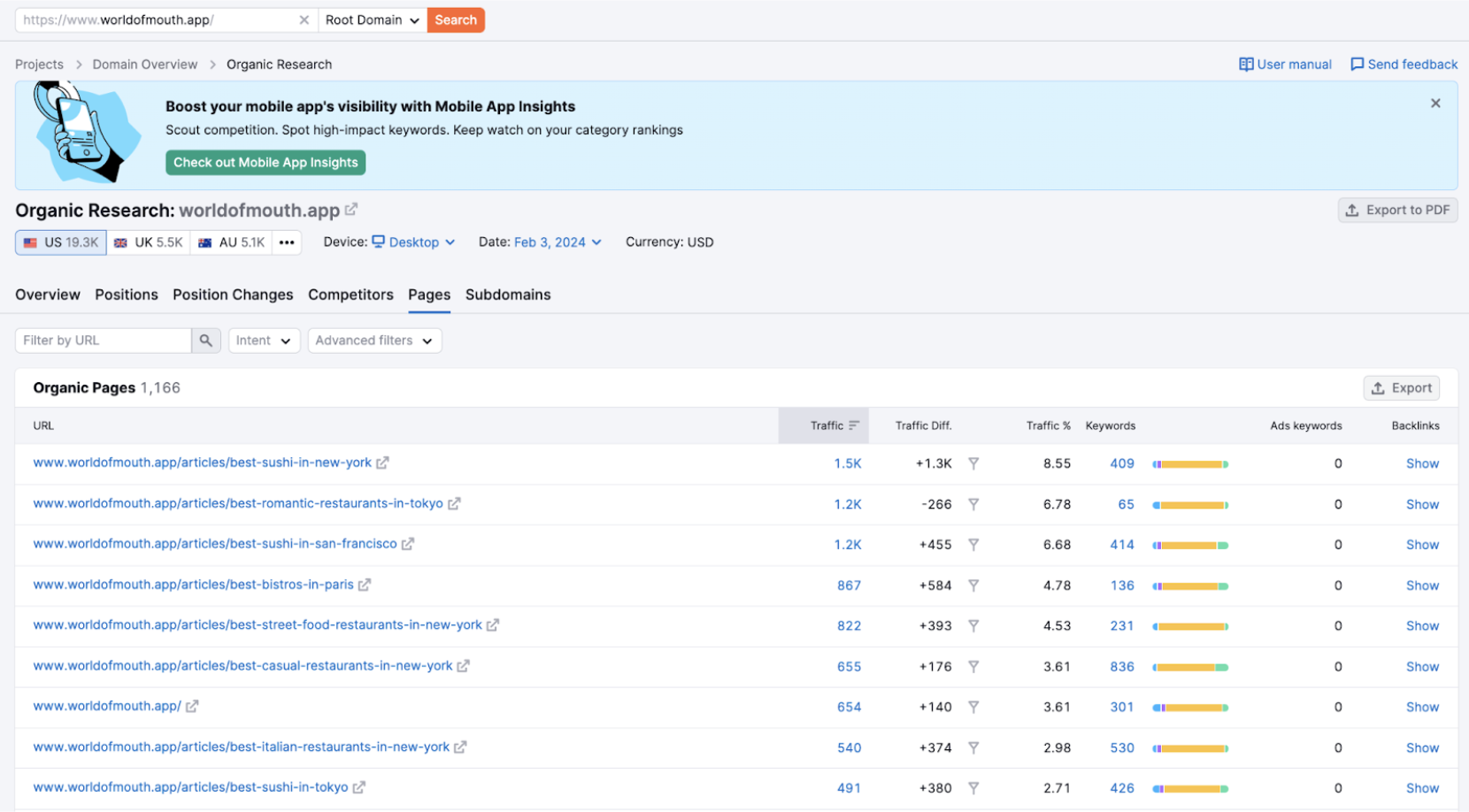
This can help you assess the success of your own SEO efforts and get ideas for boosting your performance.
2. Keyword Rankings (Positions)
Keyword rankings refer to your website’s position in search engine results pages (SERPs) for specific queries.
This SEO metric helps you assess your website’s visibility to potential visitors who use certain search terms.
Why it matters:
Keyword rankings are among the most important metrics for assessing SEO visibility.
Why?
Because higher positions in SERPs generate more clicks, as users tend to select pages from the top results.
For instance, the first position in Google’s search results can generate a CTR of up to 39.8%, dramatically decreasing as positions lower. Positions 2 and 3 see CTRs of around 18.7% and 10.2%, respectively.
So, improving your rankings for strategic keywords directly impacts organic traffic.
How to track it:
To find your keyword rankings in Google Search Console (GSC), head to Performance → Search results.
Use filters at the top of the report to segment your data by date range, query, page, country, device, and search appearance.
This helps you drill down into specific areas of interest, like how a particular keyword performs over time or across different devices.
For example, you can see the average position of a specific page:
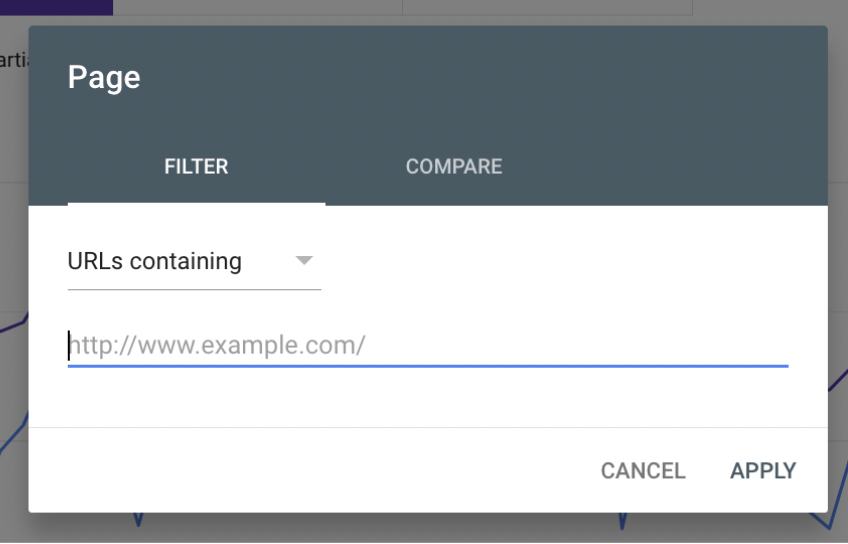
After applying filters, you will see this page’s average position in search results, reflecting its rankings across various keywords.
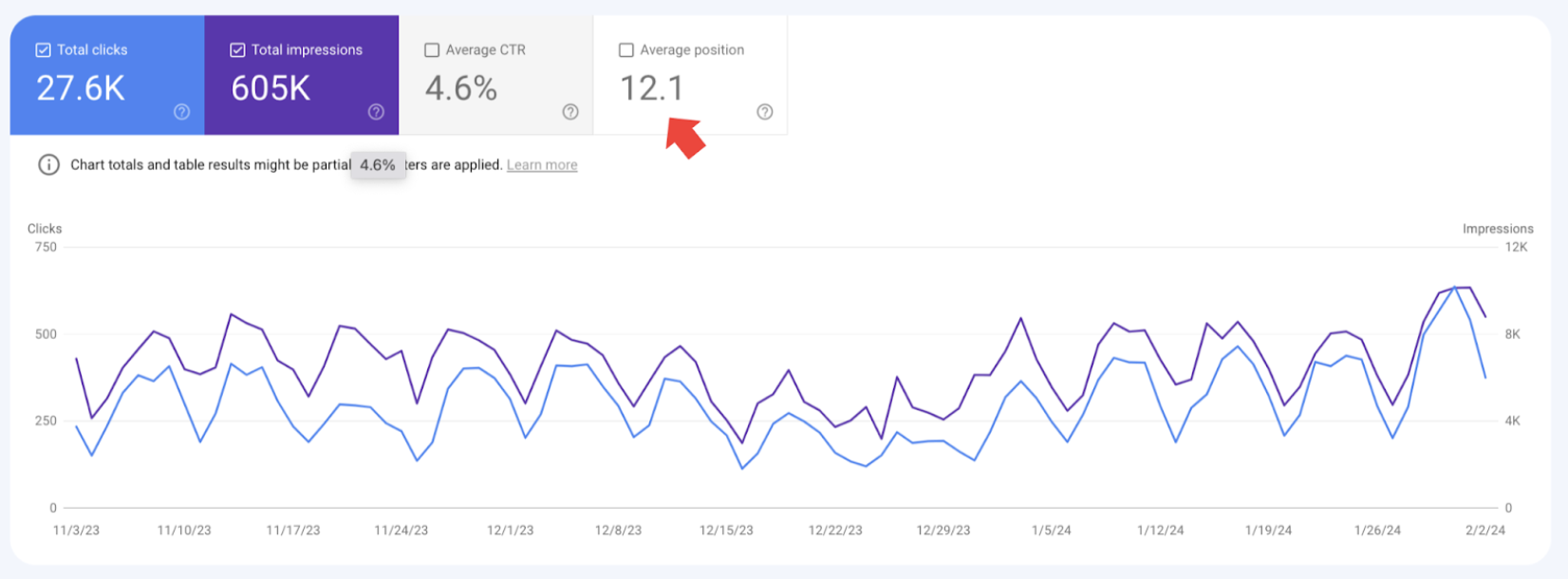
You can also use Semrush’s Position Tracking tool to analyze your keyword rankings over time.
First, open the tool and set up your project.
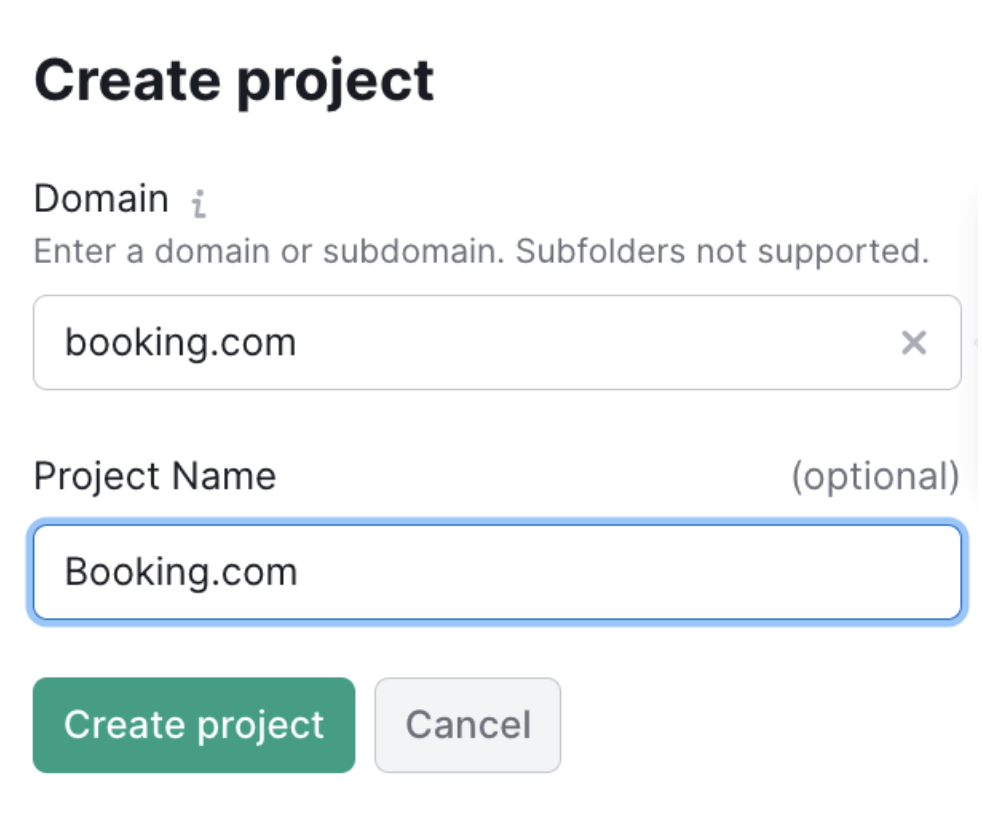
Choose your target location and list the keywords you want to track. You can keep adding more keywords to your project later on.
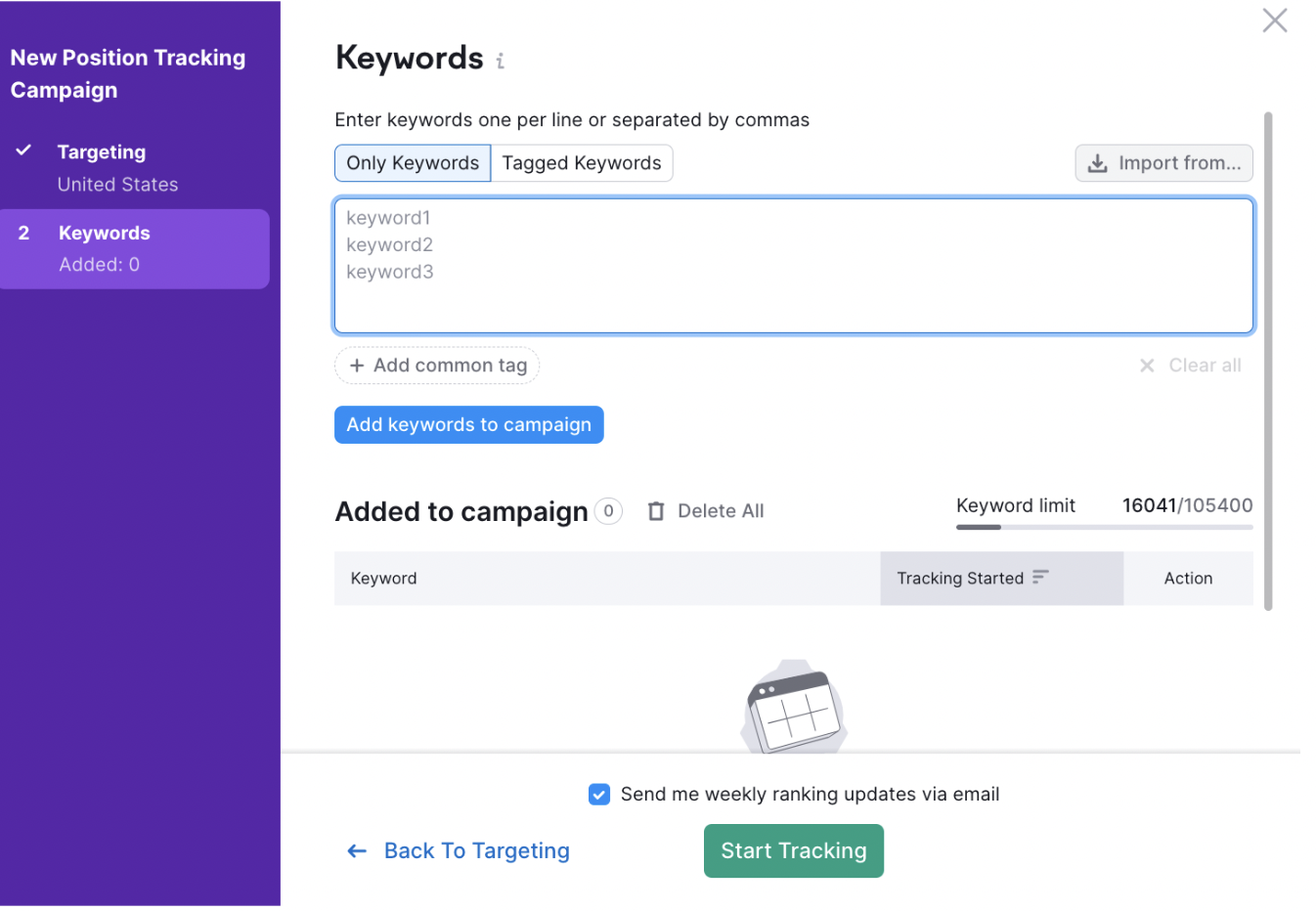
Once your project is ready, make sure to regularly evaluate your performance. It’ll help you see how your rankings change over time and quickly spot potential issues.
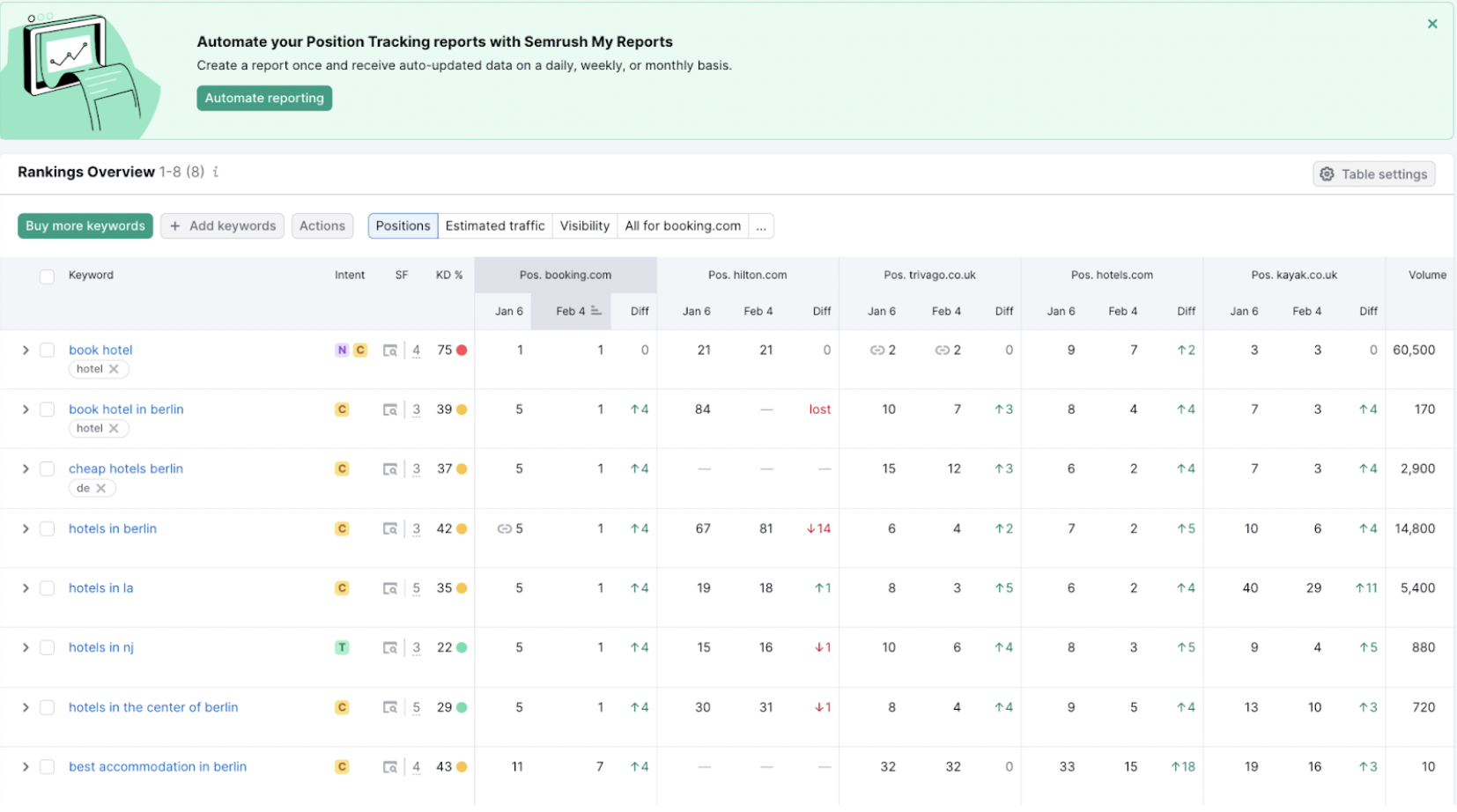
For instance, if your rankings steadily decrease for a specific keyword, you should assess and update your content.
⚡️ Pro tip:
To quickly optimize your content for target keywords, export the data to a CSV file by clicking the Export button at the top right of the Google Search Console report.

Next, use AI tools like ChatGPT (the premium plan) to find optimization opportunities.
- Upload your CSV file to the chat and use a sample prompt:
“Act as an expert SEO strategist. Analyze the ranking data for this page from Google Search Console. Create a list of keywords we rank for in positions 2-10 and submit it as a CSV file. Prioritize them by volume and group ” - Ask ChatGPT to rewrite your existing page: “Analyze the current page copy and suggest changes to increase its rankings for the top 10 keywords from this list. Provide an optimized version of the text. Current page copy:{page copy}”
Then, you could even upload your competitors’ pages and ask AI to provide more ideas based on the structure and keyword frequency they use.
3. Engagement Rate
Engagement rate is an essential metric that replaced Bounce Rate in Google Analytics 4 (GA4).
It measures the percentage of visitors that had a meaningful interaction with a page—e.g., by spending a lot of time on it or by clicking something.
In GA4, an engaged session:
- Lasts longer than 10 seconds
- Has a conversion event
- Or has at least 2 pageviews or screenviews.
It’s calculated as the number of engaged sessions divided by the total number of sessions over a specified time period.
Why it matters:
Engagement rate signals whether users enjoy interacting with your website content.
It might have a tangible effect on SEO as Google prioritizes appealing and useful content. And you might see that pages with low engagement scores tend to rank lower.
Look for pages with lower engagement rates and brainstorm ways to optimize them. This could involve adding depth to your content or enriching it with visual elements.
Studies show that the average engagement rate is around 63% for B2B websites and 71%—for B2C. However, this number fluctuates depending on the industry and business type.
How to track it
Open your GA4 account and head to Reports → Explore→ Landing page.
Next, add a filter to only leave organic traffic using the same method we tried before:
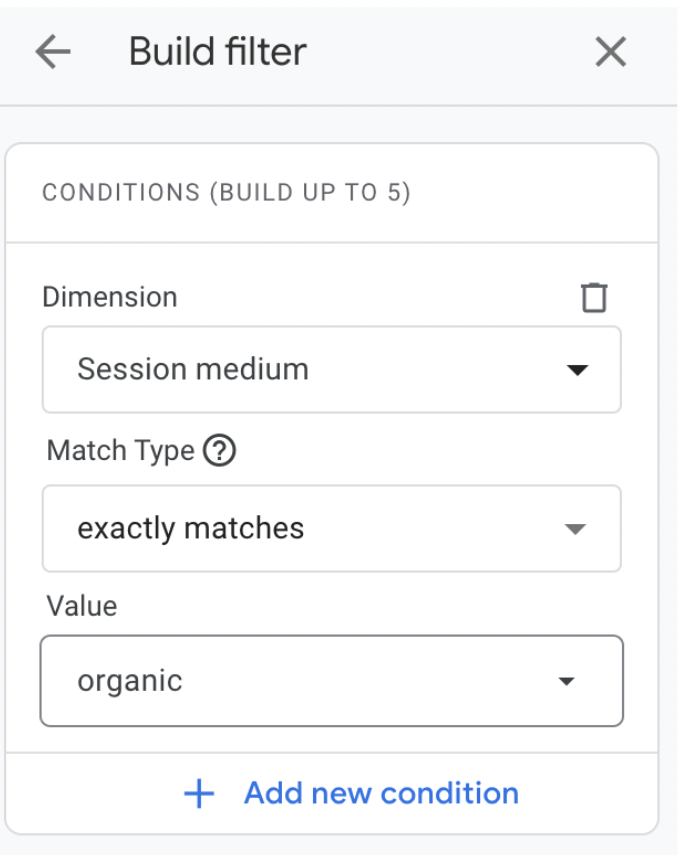
Finally, add the “engagement rate” metric to your report—click Customize report (the pencil icon)→ Metrics → Engagement rate.
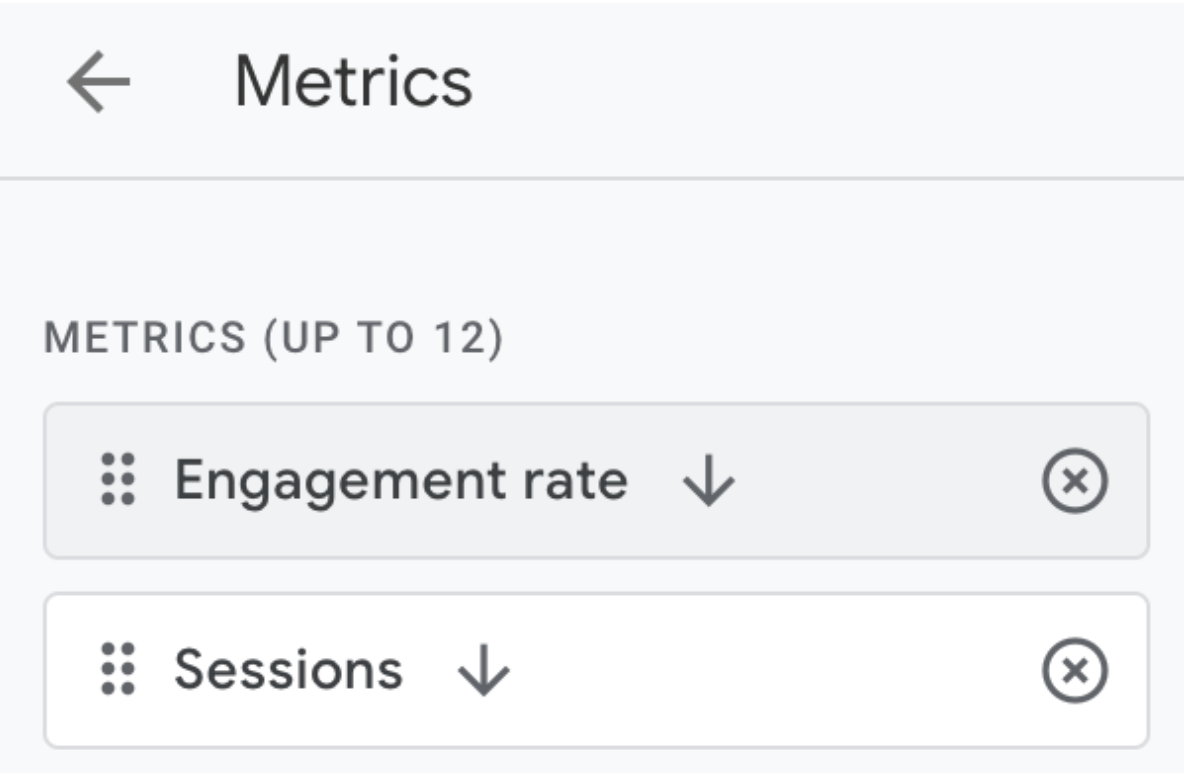
Now, you can find out which of your pages generate the most engagement—and vice versa.
Try to spot patterns and dig deeper into the data.
For example, why do some pages generate more engagement? Do they have any common characteristics?
Or, can you optimize the low-engagement pages and potentially rank them higher?
Adding certain tweaks could give your SEO strategy a powerful boost.
4. Traffic Value, Conversions, and Revenue Generated with SEO
Traffic value reflects the quality of your site’s organic visitors, essentially putting a dollar value on your SEO efforts.
You can look at different metrics when evaluating the impact of your SEO efforts—from sign-ups and leads to MoM user growth and revenue.
Why it matters:
This metric helps assess the return on investment (ROI) of your SEO strategy.
It’s crucial for prioritizing SEO efforts towards keywords and content that drive traffic and generate revenue.
This is the end goal of your strategy—boosting the bottom line and growing your business.
How to track it:
There are several methods for assessing the value of your traffic.
Method #1
Start by looking at how much organic traffic you get, how well your site turns visitors into customers, and what each conversion is worth.
Here’s the formula:
Value of organic traffic = Organic Traffic x Average Conversion Rate x Average Value per Conversion
Multiplying these figures gives you a direct estimate of the financial worth of your organic traffic.
⚡️ Pro tip:
Use Google Analytics (GA4) to check your average conversion rates from organic traffic.
Head to Acquision → Traffic acquisition and click Customize report.
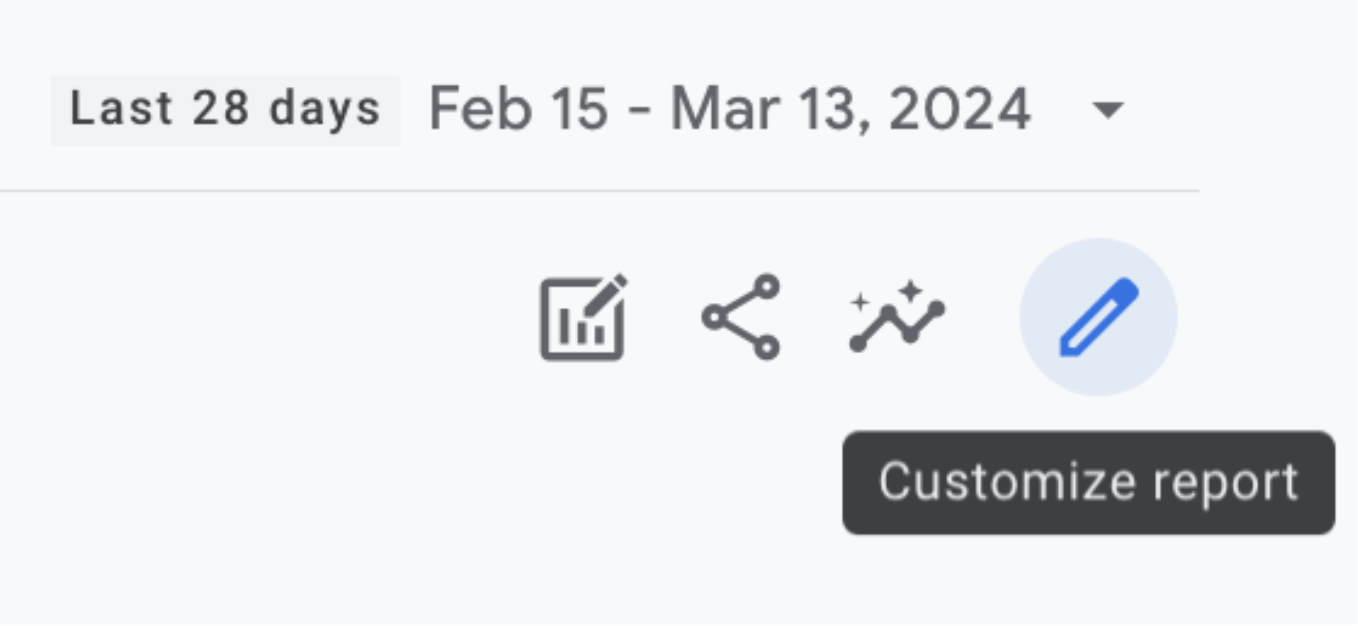
Click Metrics and search for Session conversion rate.
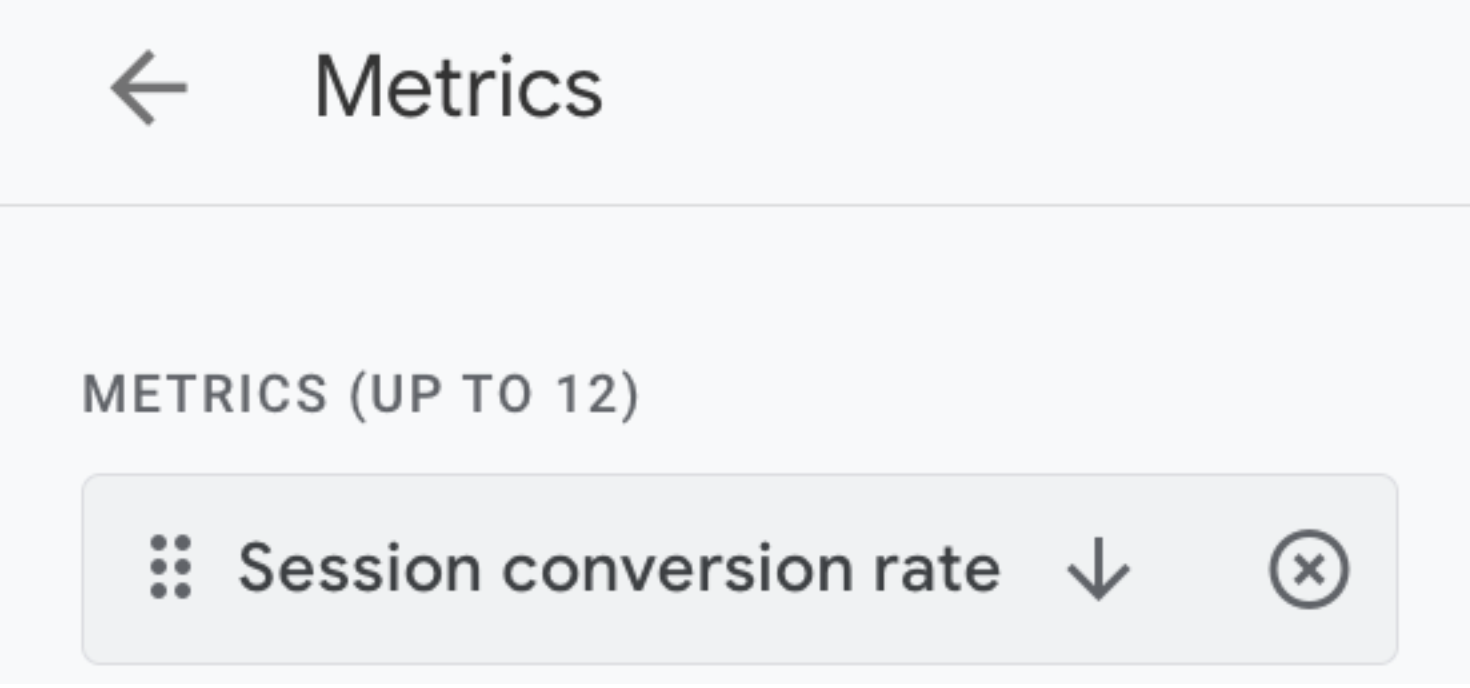
Now, you can see the average conversion rate for different traffic sources—among other selected metrics.
To analyze organic conversions for specific pages, go to Engagement → Landing page, and add the same filter we used in the previous step:
- Dimension: Session medium,
- Match type: Exactly matches,
- Value: Organic.
Make sure you still have the Session conversion rate added to your list of metrics.
Method #2
Secondly, you can consider how much you would pay for your organic visitors if you were to acquire them through paid search ads.
Start by determining your site’s total organic traffic.
Next, find the average CPC for the keywords driving that traffic. You can find this data from your PPC campaigns in Google Ads or keyword research tools.
Here’s the formula:
Traffic value = Organic Traffic x Average CPC (Cost Per Click)
⚡️ Pro tip #1:
Make sure to integrate your analytics and sales data.
For example, set up conversion events in your Google Analytics 4 (GA4) account and connect it with your CRM software. You can then attribute certain revenue values to different events, especially those related to transactions.
CRM tools like HusbSpot also let you easily see form sign-ups and other conversions attributed to every individual page.
All this allows you to track conversions, sign-ups, leads, and purchases generated by organic traffic and various content pieces.
⚡️ Pro tip #2:
Use the conversion rate data to understand which topics and content formats perform best.
Then, leverage this insight to refine your content strategy and create effective content funnels.
For example, you can:
- Add links in your top-of-the-funnel pieces to content that has high conversion rates.
- Prioritize content formats and topics that show the best performance.
- Test and optimize various CTAs in your content.
- Expand and repurpose successful topics. For example, if your high-ranking blog post generates many conversions, consider turning it into a lead-generation content piece.
5. Average Click-Through Rate (CTR) in Search
The average click-through rate (CTR) in search measures the percentage of users who click on your website’s listing in the SERPs after viewing it.
As we already established, this SEO metric is heavily influenced by your page’s ranking position.
However, other factors, such as the relevance of your page’s title, description, and URL, also play a role.
Why it matters:
A high CTR signals that your search listing resonates well with searchers, making it relevant and appealing.
In 2025, SERPs continue to evolve as more and more features impact clicks.
For example, Google’s generative AI—AI summaries appearing in SERPs—and Featured Snippets make high CTRs harder to achieve.
Here’s how it looks:
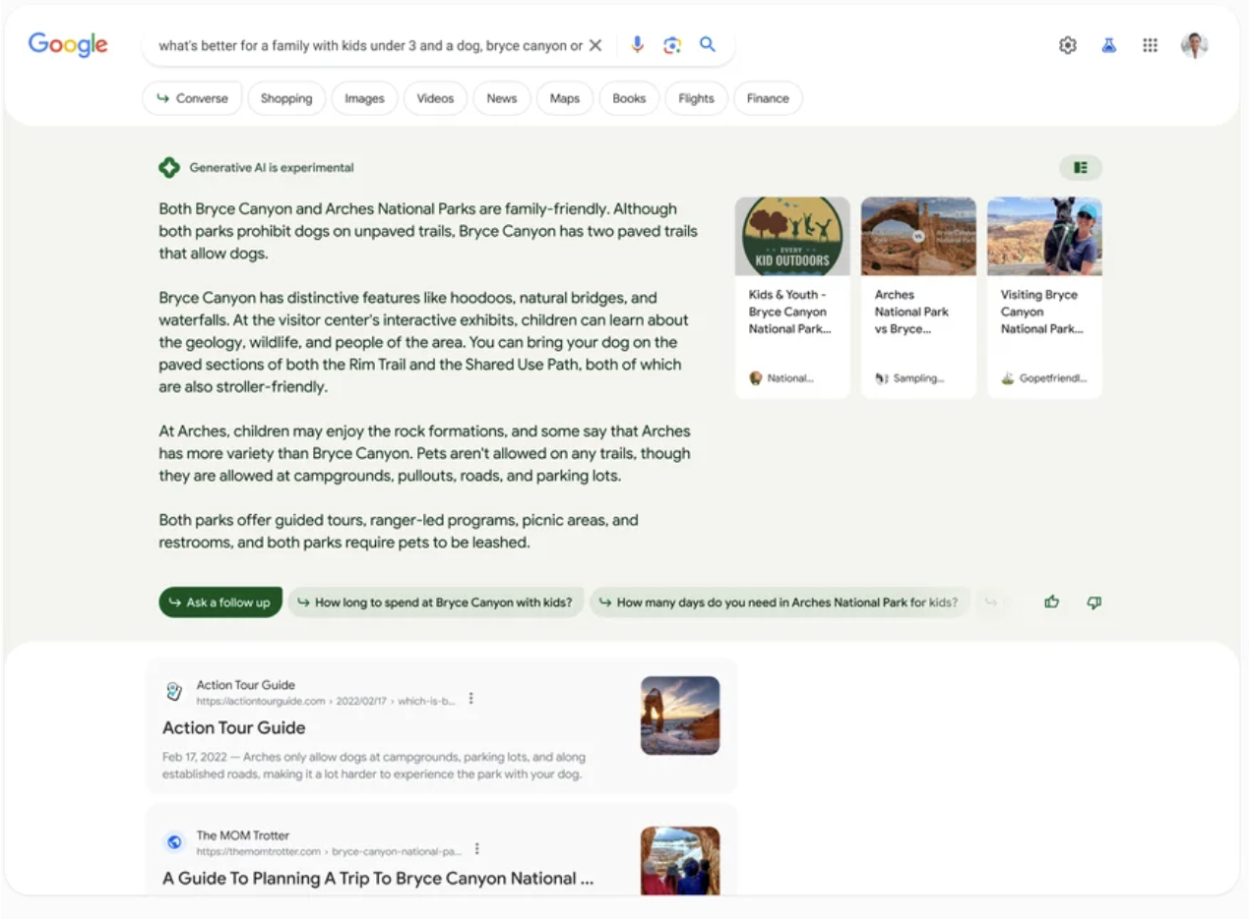
Optimizing meta tags and creating interactive content can help your website address this issue and keep generating traffic.
How to track it:
Go to your Google Search Console (GSC) account and open the ‘Search Results’ tab under the ‘Performance’ report.

This section breaks down your site’s search performance, including the average CTR of your pages.
As always, you can add filters to look at specific folders, pages, and queries.
Pro tip:
Andy Crestodina, the Co-Founder of Orbit Media, suggests using AI to find opportunities to boost your CTR.
First, download data from your GSC account.
Then, ask AI to analyze the file and find anomalies where pages with a high position have a lower-than-expected CTR.
Here’s a sample prompt:
“Act as an expert SEO Specialist. Looking at SEO to analyze search performance and engagement in the SERPS, which of the following pages has lower than expected CTRs based on their average search position?”
6. Referring Domains
Referring domains act like votes of confidence from one website to another.
In a nutshell, it’s the number of unique websites that link back to your site.
Why it matters:
This metric is essential for off-page SEO and speaks volumes about the authority of your website in the eyes of search engines like Google.
Each link from a different website acts as an endorsement for your site. The more endorsements you receive, the more search engines consider your site trustworthy.
Yet, it’s not merely a numbers game.
The quality of these referring domains is extremely important. That’s why you should focus on links from authoritative sites relevant to your niche.
How to track it:
There are a few ways to access and track this metric.
1.First, you can check it directly in Google Search Console. Head to ‘Legacy tools and reports’ and open the ‘Links’ report.
From here, you can see your website pages that receive the most links and the top linking domains.
2.If you’re using a specialized SEO tool like Semrush, “referring domains” will pop up in many reports
For example, head to Backlink Analytics and enter the domain or page link. You can check your domain or your competitors’ domains.
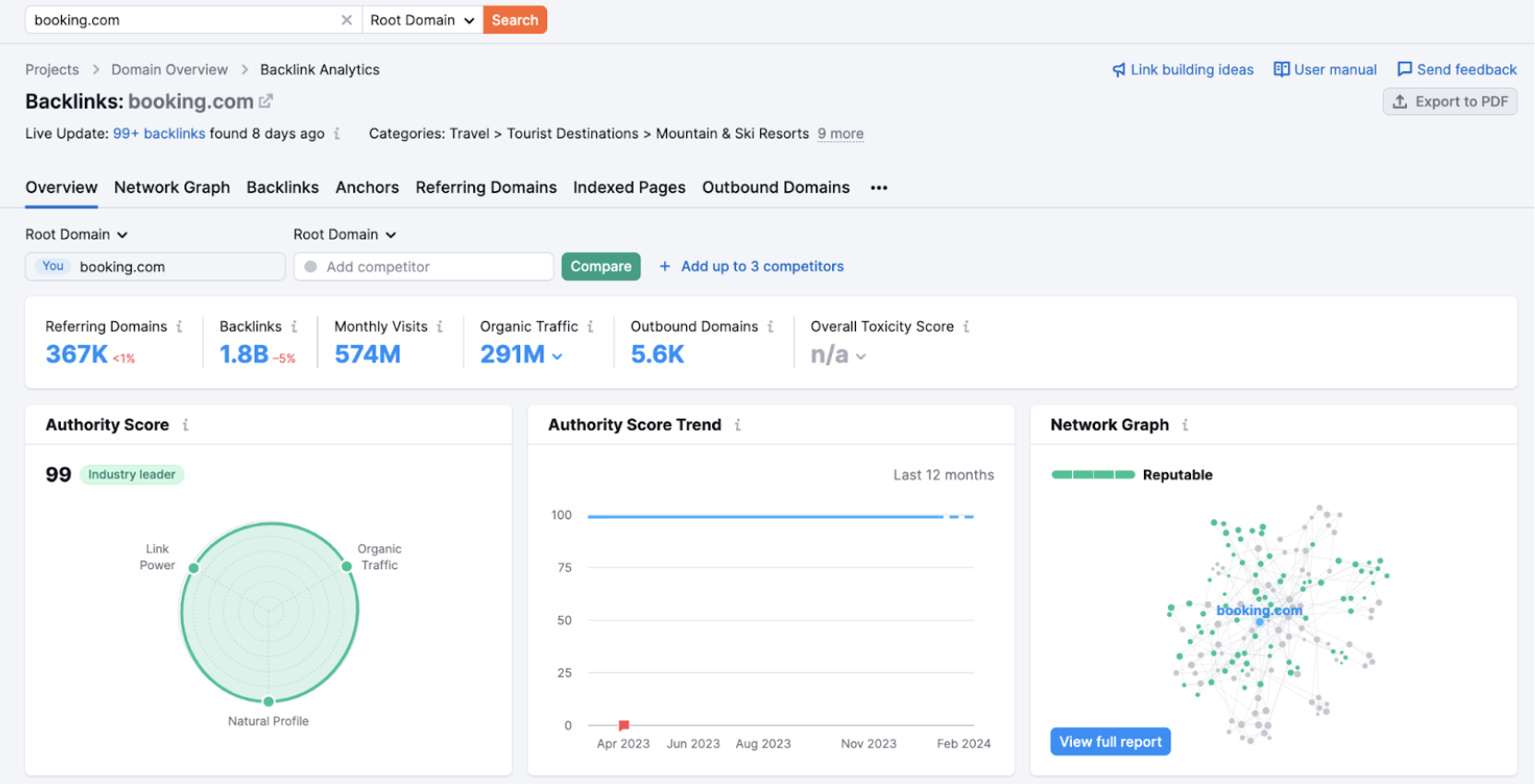
Open the “Referring Domains” report and analyze the dashboard.
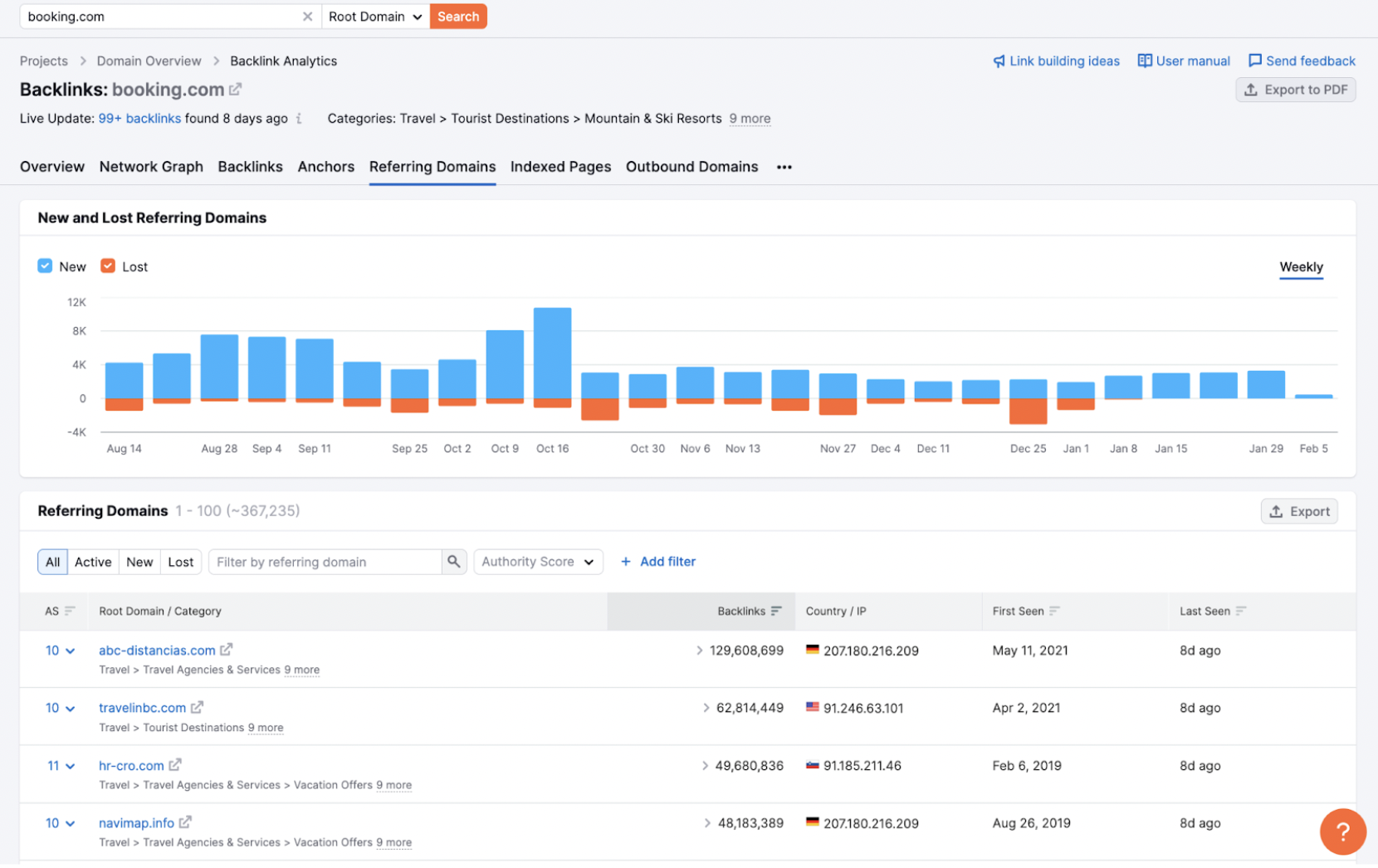
Sort the domains by their authority to pinpoint websites that provide the most impactful and valuable links. Perhaps you could consider launching a partnership with some of them.
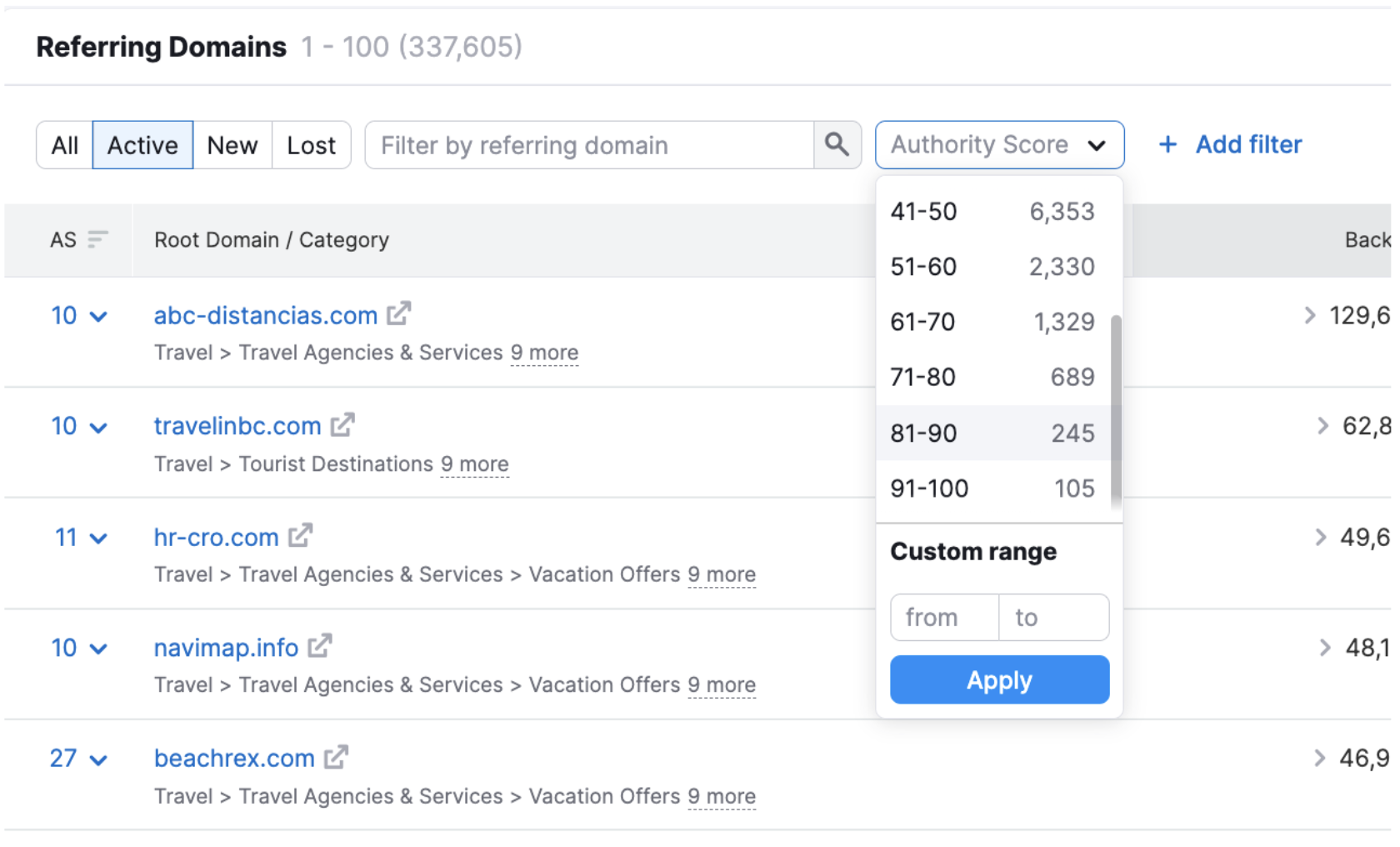
You can also filter your data by category and shortlist links that are most relevant to your niche.
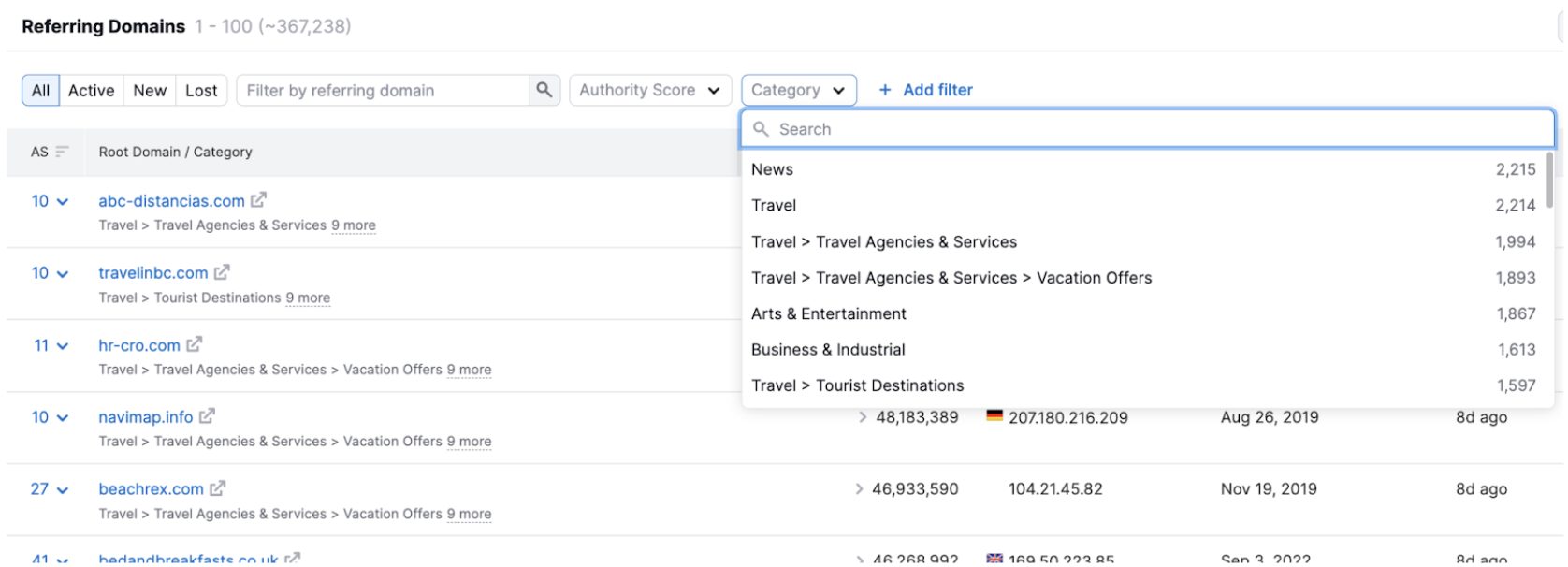
7. Backlink Profile
Analyzing referring domains is essential to boost your off-page SEO.
But you can dig deeper and assess your website’s backlink profile.
It’s a snapshot of all the links pointing to your site from external sources. It includes the number of backlinks, their quality, and where they come from.
Why it matters:
A strong backlink profile signals that your content is valuable and authoritative, deserving a higher spot in search results.
Quality is crucial here; a few links from trusted, high-authority sites will boost your SEO much more effectively than numerous low-quality links.
You should also make sure your backlink profile is diverse, featuring links from various domains.
How to track it:
Use the same Semrush tool we discussed earlier—Backlink Analytics.
You can analyze the backlink profile for the domain and each individual folder or page.
Simply enter it in the tool and start by assessing the overall number of backlinks.

From here, head to the most important reports.
1. Network Graph
Network Graph—to assess the percentage of backlinks you (or your competitor) receive from relevant websites in your niche.
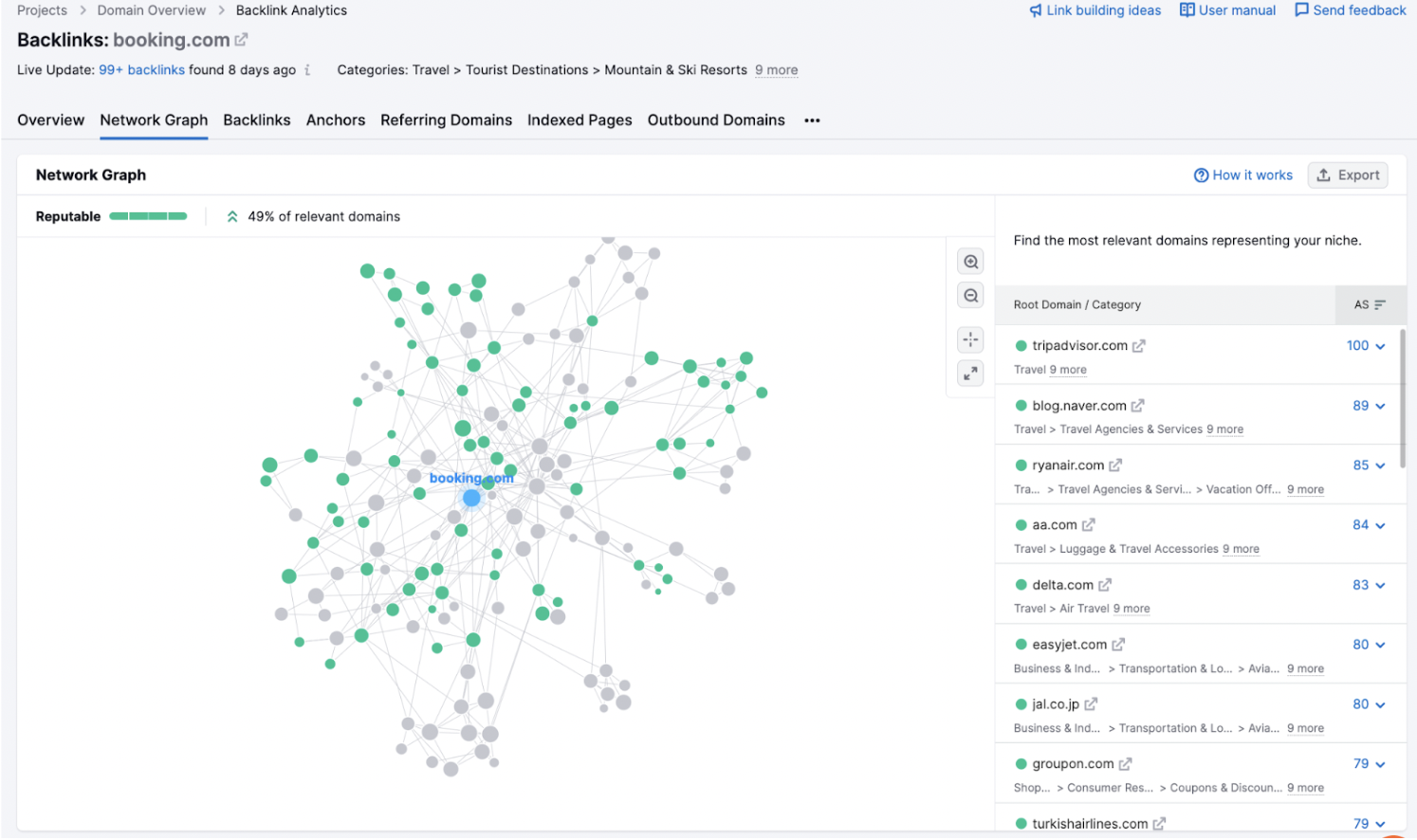
2. Backlinks
Backlinks—to see each individual backlink pointing to your site, analyze their types, and add various filters.
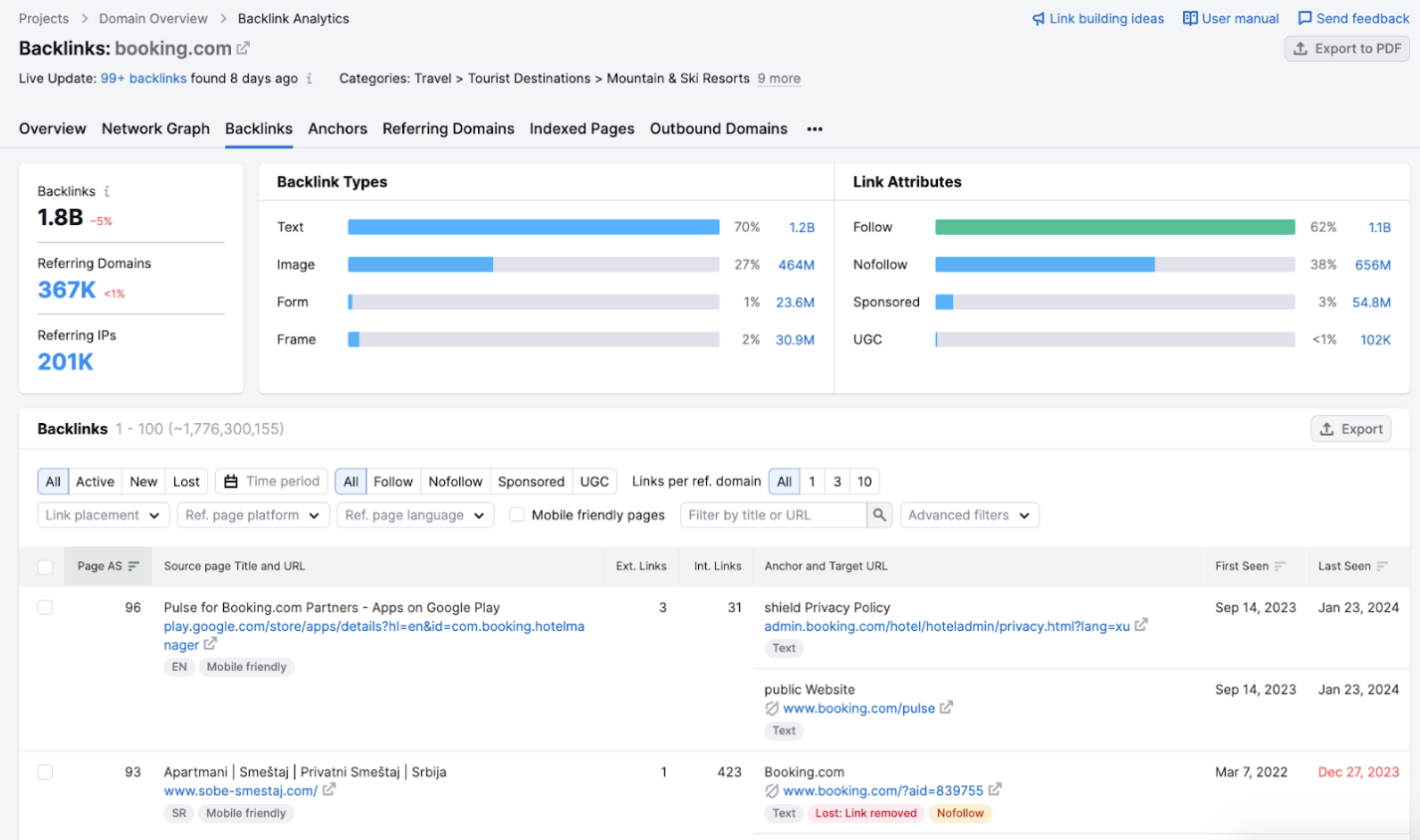
For example, you can focus on do-follow backlinks—that is, backlinks that pass link equity and rank to your pages.
Or, try filtering out the backlinks you have lost.
You could then add fixes—such as updating your content—and reach out to some of the referring websites to try to get them back.
3. Indexed pages
Indexed pages—to check website pages that attract the most backlinks.
This report is handy for finding common patterns of pages that attract more inbound links.
It can help you generate ideas for link magnets based on what works best for you and your competitors.
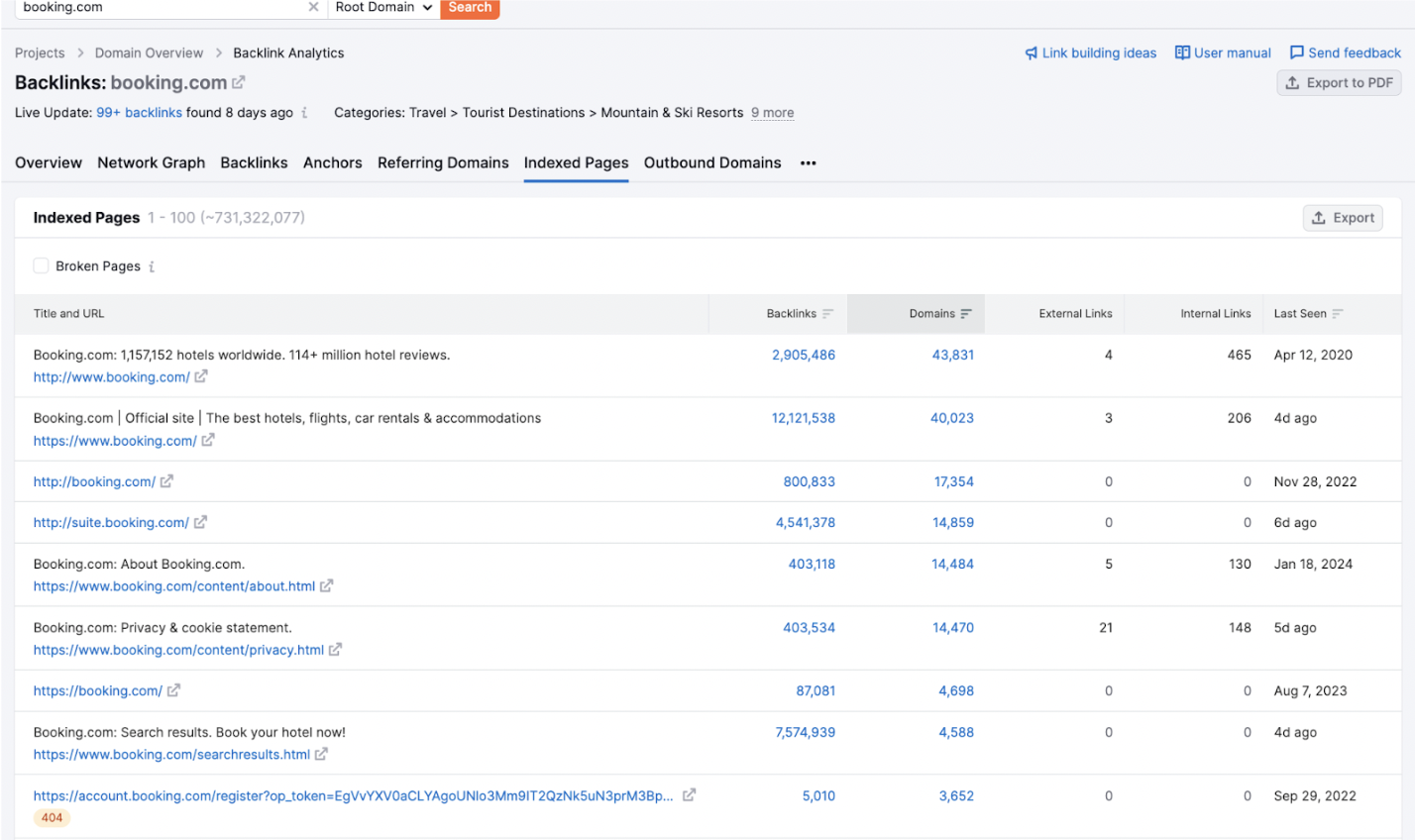
⚡️ Pro tip:
Analyze the toxicity of your backlink profile to ensure your website’s SEO health.
Toxic backlinks are the inbound links from low-quality, irrelevant or spammy websites. They can damage your search engine rankings and potentially lead to penalties from Google.
Use tools like Semrush’s Backlink Audit to identify toxic backlinks and add fixes.
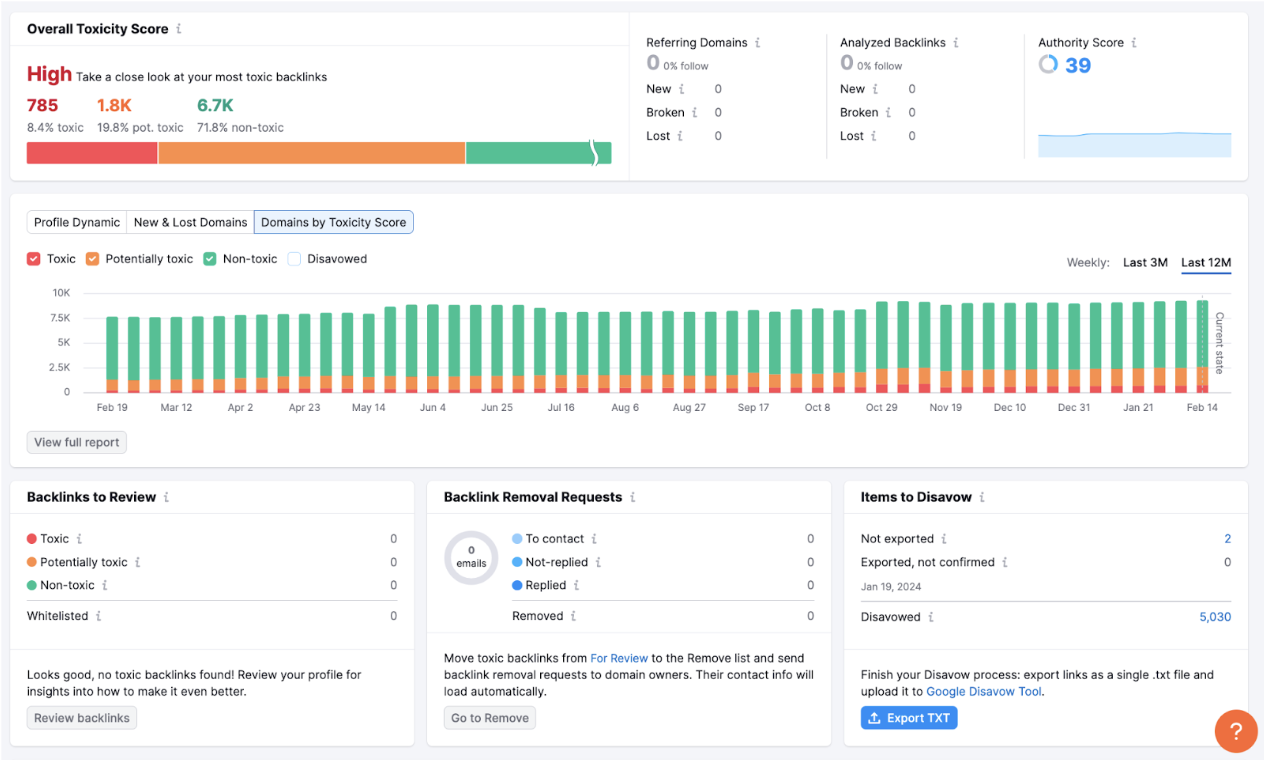
8. Domain Authority Over Time
Broadly speaking, “authority” in SEO estimates how reputable and trustworthy your website is in the eyes of search engines.
The Domain Authority Score predicts how well a website or a page will rank in search.
It’s based on a mix of factors, including the number and quality of backlinks to the website and the incoming traffic.
Search engines don’t provide the Authority Score, but you can check it using different SEO tools. Each tool has its proprietary method of calculating this metric.
Why it matters:
Keeping track of your Domain Authority Score helps evaluate if your SEO efforts are paying off.
If your score goes up, you’re doing something right—such as getting more quality links and improving your content.
If it’s not changing or going down, it might be time to look at what you can do differently.
Besides, the higher your Authority score is, the easier it’ll get for you to rank on the first page—as long as you create quality content.
How to track it:
Almost every major SEO tool has its own Authority Score. For example, to check it in Semrush, head to Domain Overview and enter your (or your competitors’) domain.
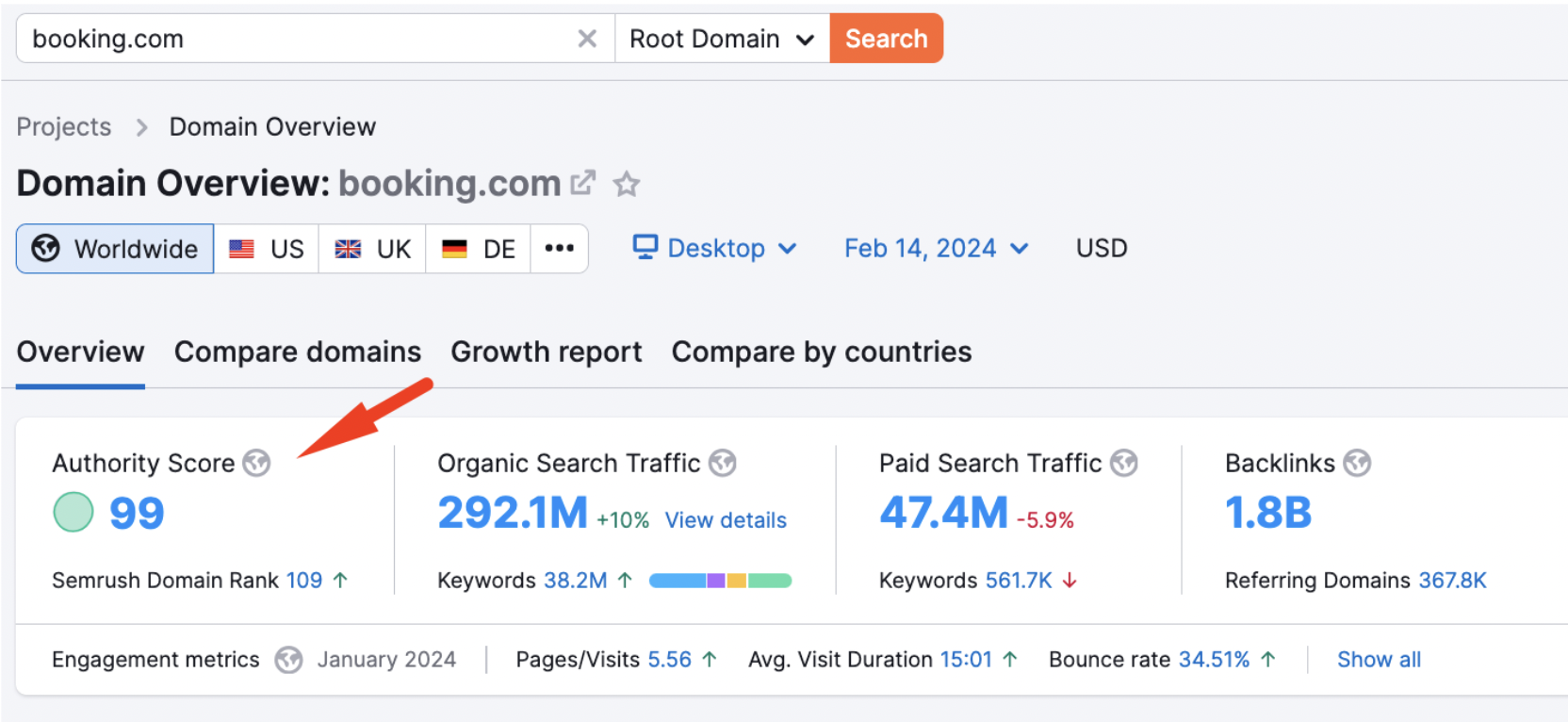
Checking your competitors’ authority helps you understand where you stand in your niche and what you might need to work on.
Not sure which competitors to analyze?
Scroll down within the same dashboard to find a list of your organic competitors and click ‘View details’.
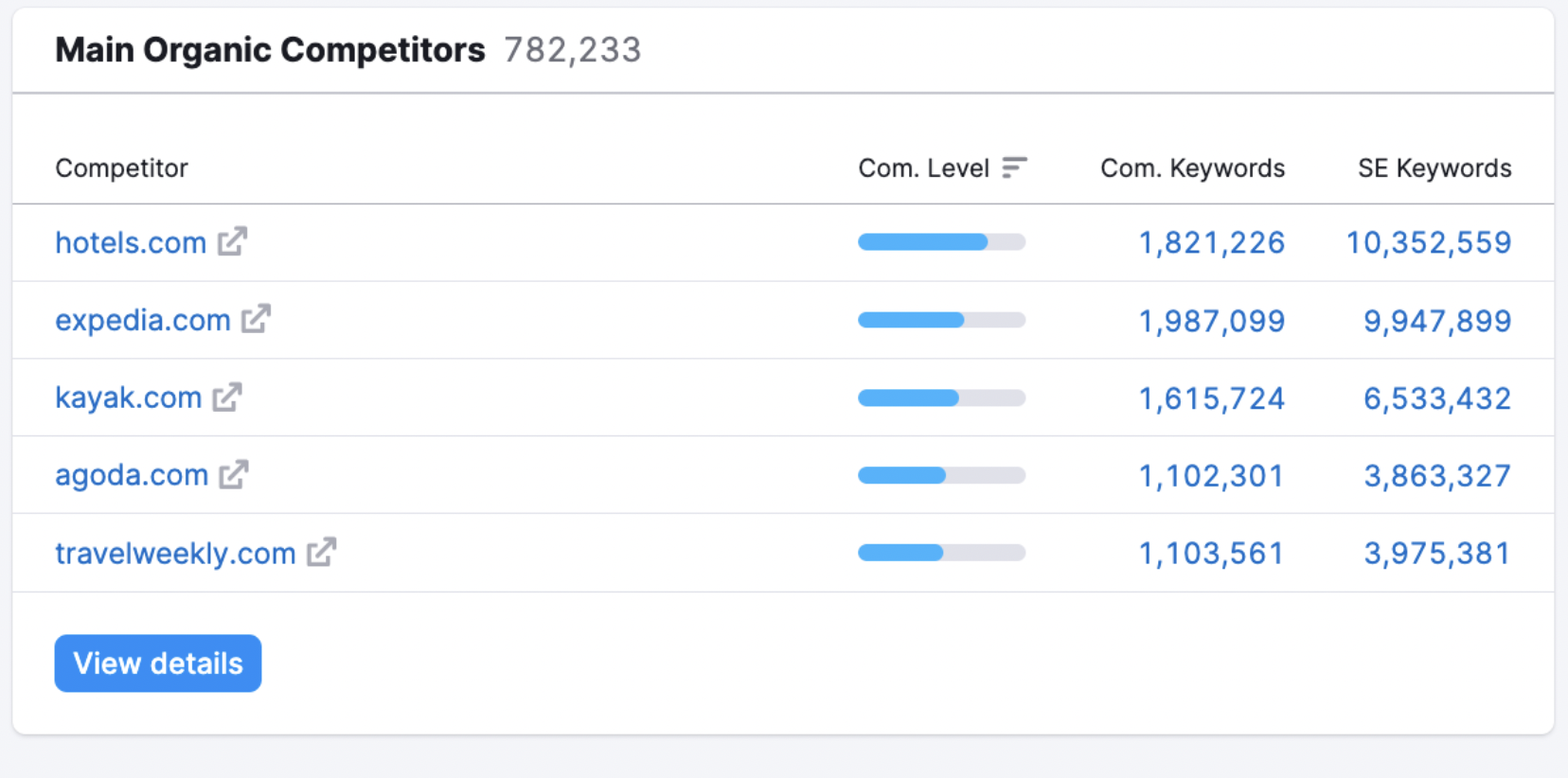
Remember, improving your site’s authority takes time and consistent effort.
Sometimes, a lot of it.
So, focus on creating useful, original content and building relationships that lead to quality backlinks.
9. Keyword Gaps
This metric is about finding opportunities you might be missing in your SEO strategy—specifically, the keywords your competitors are ranking for that you aren’t.
Why it matters:
I’d recommend conducting a keyword gap analysis every now and then.
Doing so allows you to quickly find new opportunities for attracting organic visitors.
It also helps you analyze your audience’s interests and spot areas where your competitors might have an edge.
How to track it:
Many of the available SEO tools have a keyword gap analysis tool in some capacity.
Here’s how to do it with Semrush.
Head to the Keyword Gap tool and input your domain and your competitors’ domains (up to three).
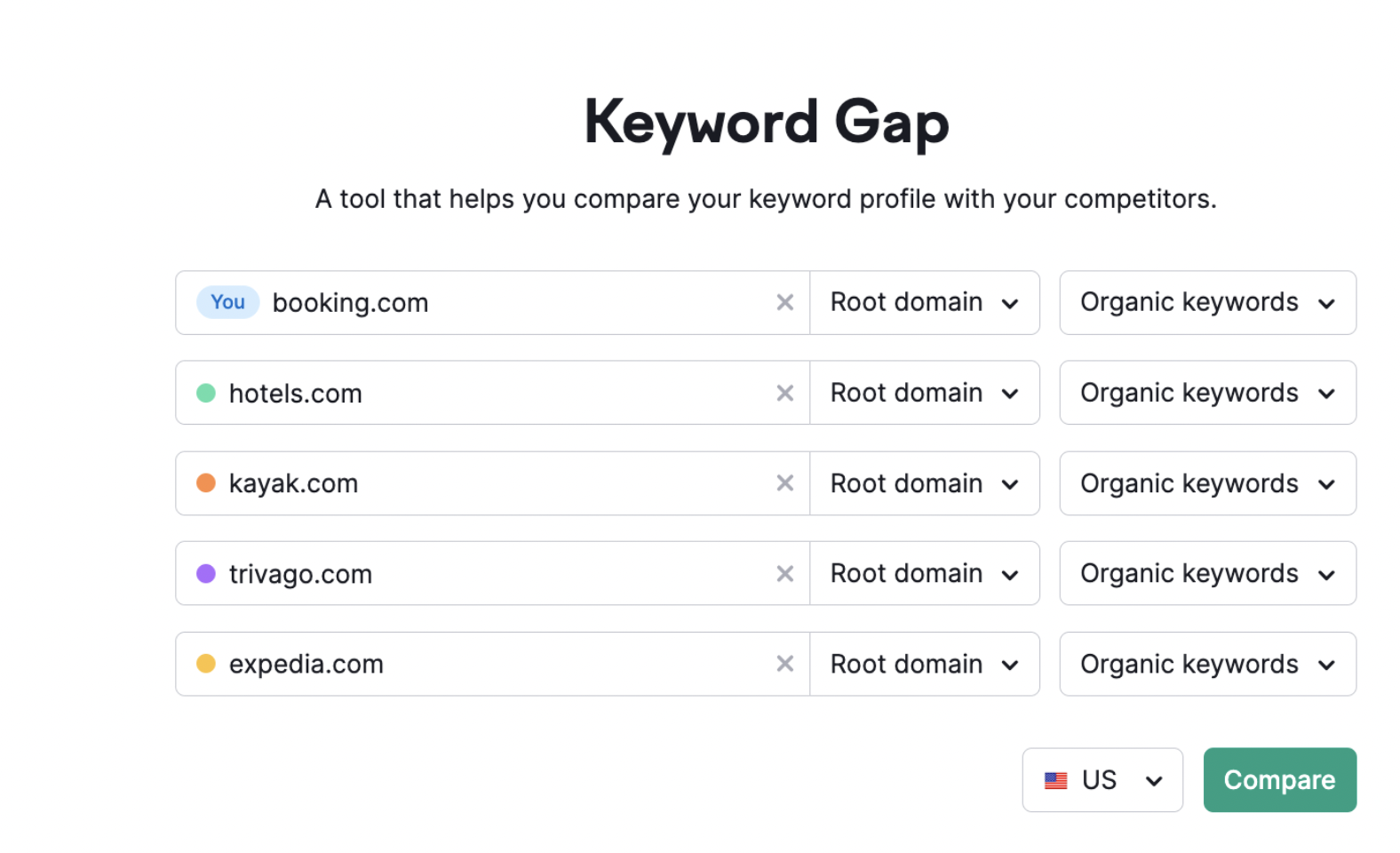
Next, you’ll see a report showcasing all keywords you and your competitors are ranking for.
The trick is to use filters to narrow your search.
First, click on the ‘Untapped’ report to see all the keywords that your competitors rank for and you don’t.
Second, apply filters to see keywords that:
- Your competitors rank for in the top 10
- Have 1,000+ monthly searches
- Have a “possible” keyword difficult (KD) score
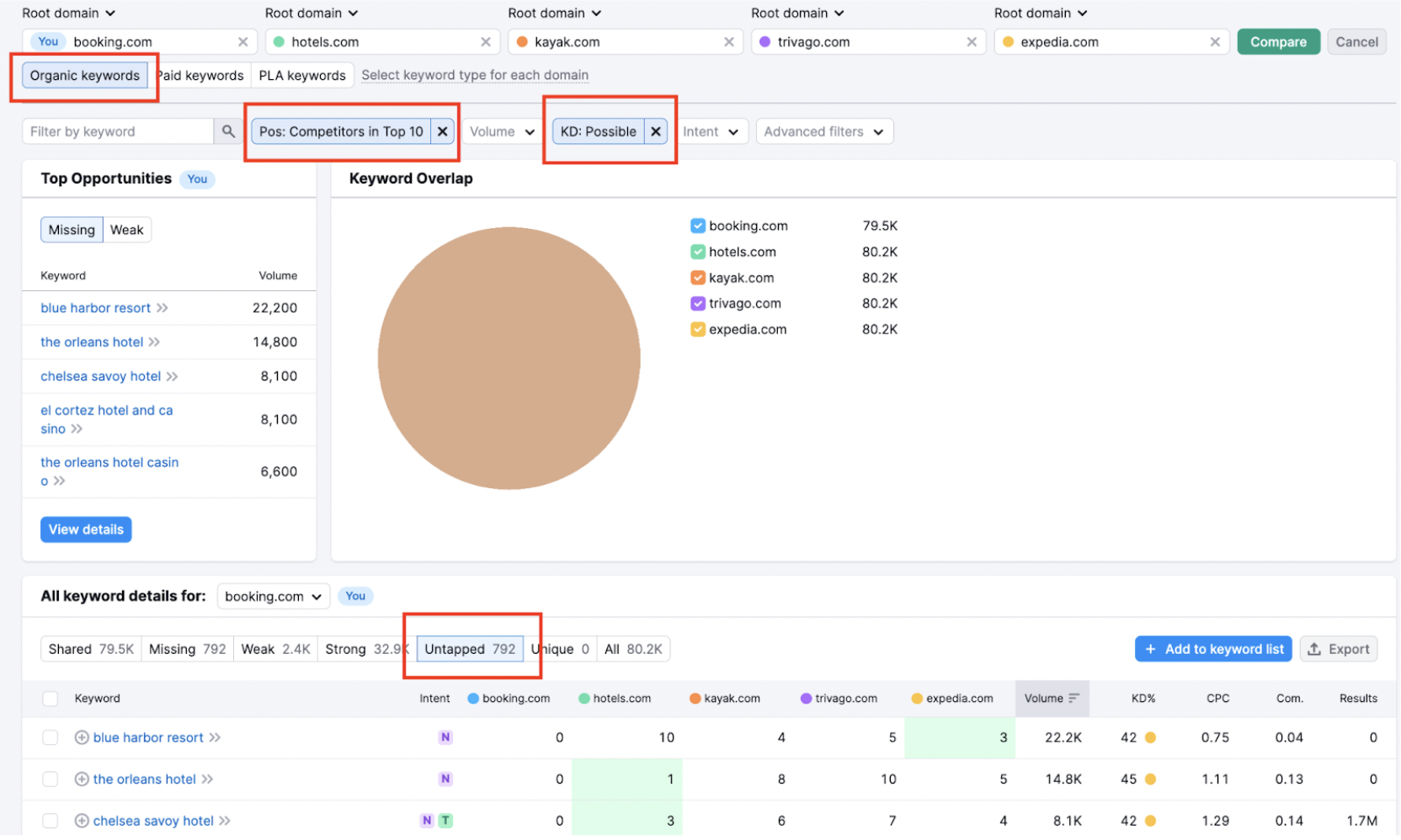
Now, you can find new keywords for your content plan —reducing the gap between you and your competitors.
This might involve creating new content, optimizing existing pages, or even revising your overall content plan.
10. Core Web Vitals
Core Web Vitals are a set of factors that Google considers important in a webpage’s overall user experience.
They measure a website’s speed, responsiveness, and visual stability—helping you understand how users interact with your pages.
Its main components include:
- Largest Contentful Paint (LCP): Measures loading performance, specifically how long it takes for the largest content element on the page to load.
- First Input Delay (FID): Measures the time from when a user first interacts with a page (e.g., clicking a button) to the time the browser is able to respond to that interaction. A low FID means the page is more interactive.
- Cumulative Layout Shift (CLS): Assesses visual stability by measuring how often users experience unexpected layout shifts of visual content on the page. A low CLS ensures that the page is visually stable.
Why it matters:
Core Web Vitals showcase how user-friendly your website is.
High scores mean your site loads quickly, has smooth interactions and stays visually stable as it loads.
On the flip side, low scores might frustrate users, leading them to leave your site earlier than intended.
That’s why Google has incorporated Core Web Vitals into its ranking criteria.
In a nutshell, websites that score well are more likely to appear higher in search results.
How to track it:
Use Google’s free PageSpeed Insights tool to check the Core Web Vitals of your website’s content.
Simply input a page link and analyze its performance on mobile and desktop.
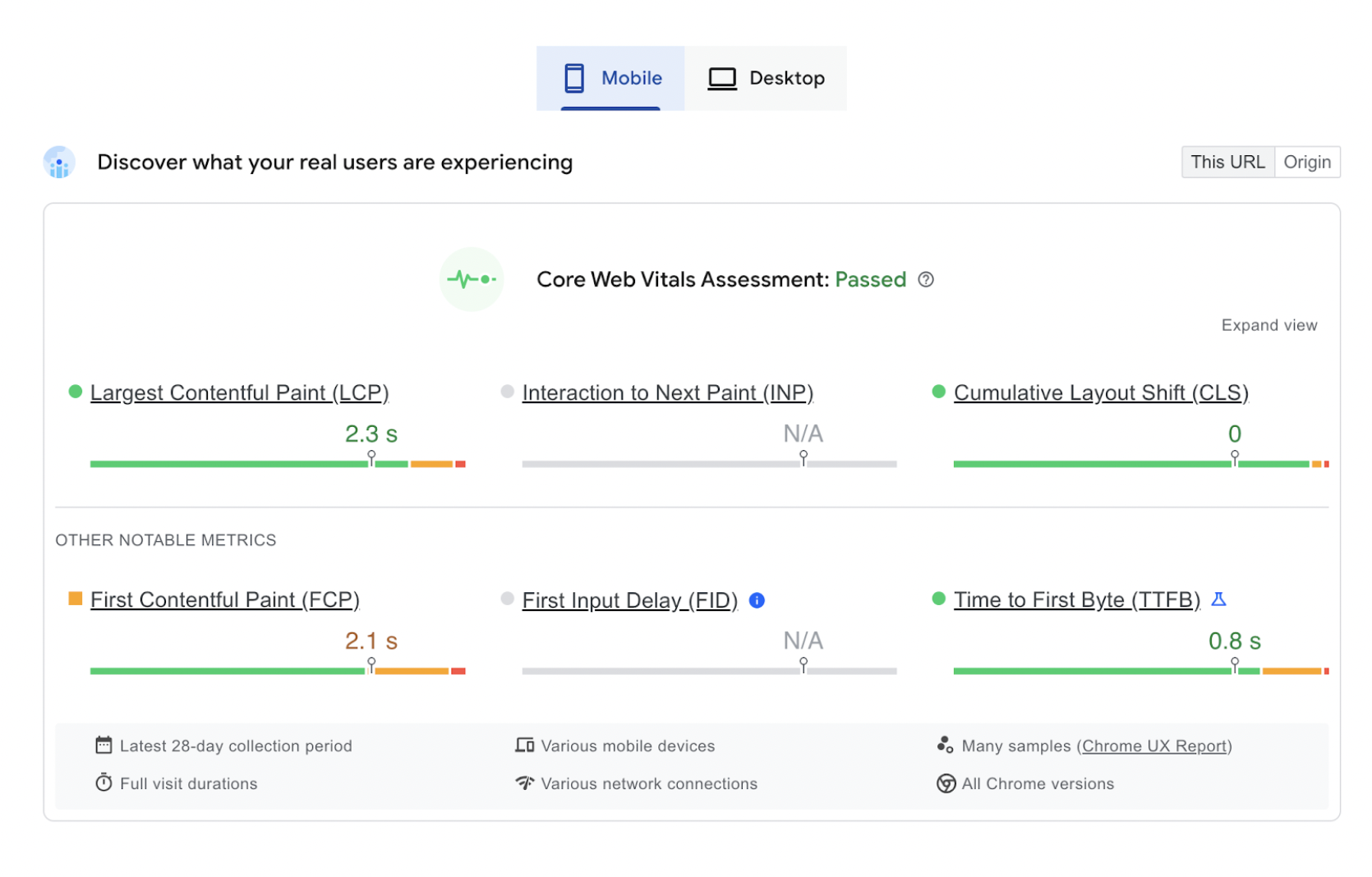
Remember: Mobile-friendliness is essential for SEO and is another important ranking factor.
So, tracking Core Web Vitals for the mobile version of your site is extremely important.
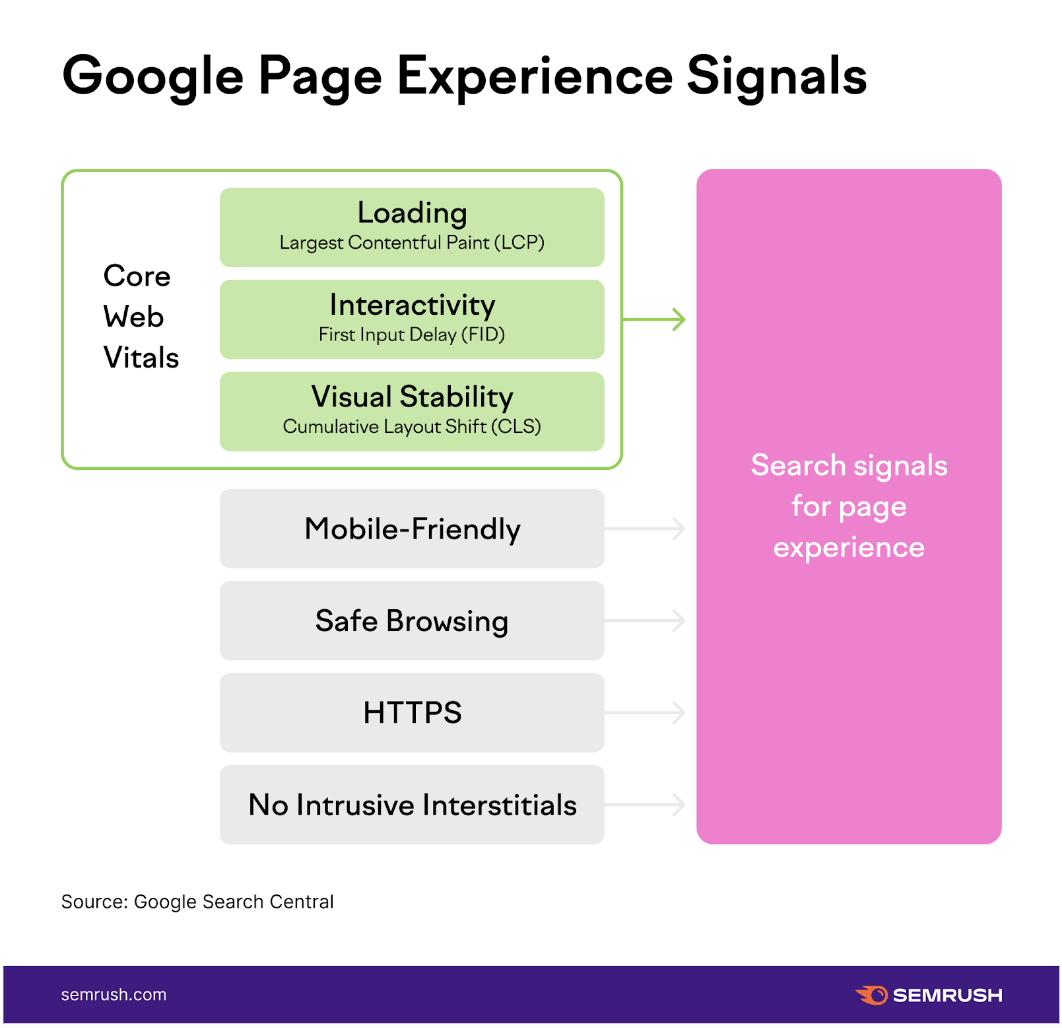
Finally, there are several ways to improve Core Web Vitals on your pages.
For example, you can compress images and text files, add size attributes for images and video elements, and more. Check this guide for precise guidelines.
11. Overall Site Health
Site health includes everything from site speed and security to mobile-friendliness and error-free navigation.
This metric tells you if your site is optimized for both users and search engines.
A well-maintained site health means providing a great user experience, which, in turn, boosts your SEO performance.
Why it matters:
Search engines give preference to websites that are fast, secure, mobile-friendly, and easy to navigate.
So, maintaining excellent site health is crucial for achieving higher search rankings.
It also encourages visitors to spend more time on your site and engage with your content more deeply.
How to track it:
It’s important to conduct regular site audits and fix issues as you spot them.
You can use Google Search Console to check various reports related to site health. For example:
- Coverage report: Identify and fix indexing errors, including server errors and pages blocked by robots.txt.
- Mobile usability report: Spot pages with mobile usability problems like text being too small or elements being too close.
- Page experience report: Assess loading, interactivity, and visual stability via Core Web Vitals and other metrics.
You can also use special tools like Semrush’s Site Audit.
It shows all site health issues in one place—from crawlability and internal linking to safety protocols and Core Web Vitals.
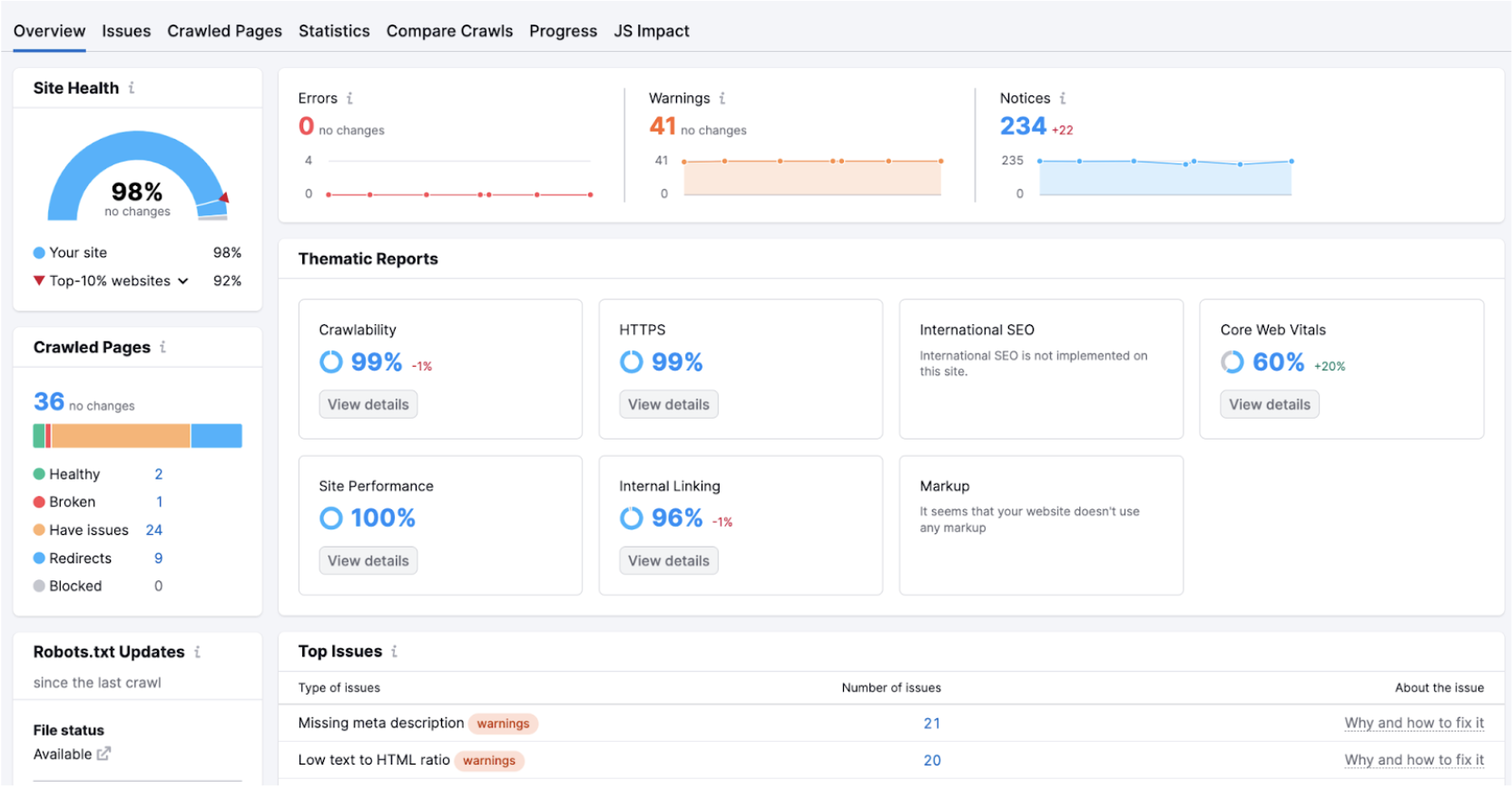
SEO Metrics That Are Less Important
Metrics like Bounce Rate, Exit Rate, and Pages Per Session are often mentioned as important for SEO.
In reality, I think they’ve always been somewhat irrelevant for SEO.
GA4 has removed and altered some of them (e.g., bounce rate) and replaced them with better alternatives.
But why are they less useful for SEO?
Take Bounce Rate, for instance. It’s defined as the percentage of single-page sessions without any interactions.
However, in SEO, a high bounce rate isn’t always a bad sign.
Consider someone who reads a blog post in full and then leaves; this typical behavior is still categorized as a bounce.
The current Engagement Rate metric in GA4 considers more important factors (such as time spent on a page), which makes it more valuable for SEO.
Track the Right SEO Metrics
SEO isn’t just a number game.
Your focus should be on metrics that are truly meaningful for your organic presence.
Prioritize SEO goals that drive the bottom line—such as conversions, leads, and revenue coming from organic traffic.
Then, regularly track secondary metrics that help you achieve those goals and remove potential bottlenecks.
For example, looking at rankings and CTRs helps you attract relevant organic traffic, which is essential for getting new customers.
Refine your strategy as you go and never stop optimizing—the data will tell you what to focus on and when.
